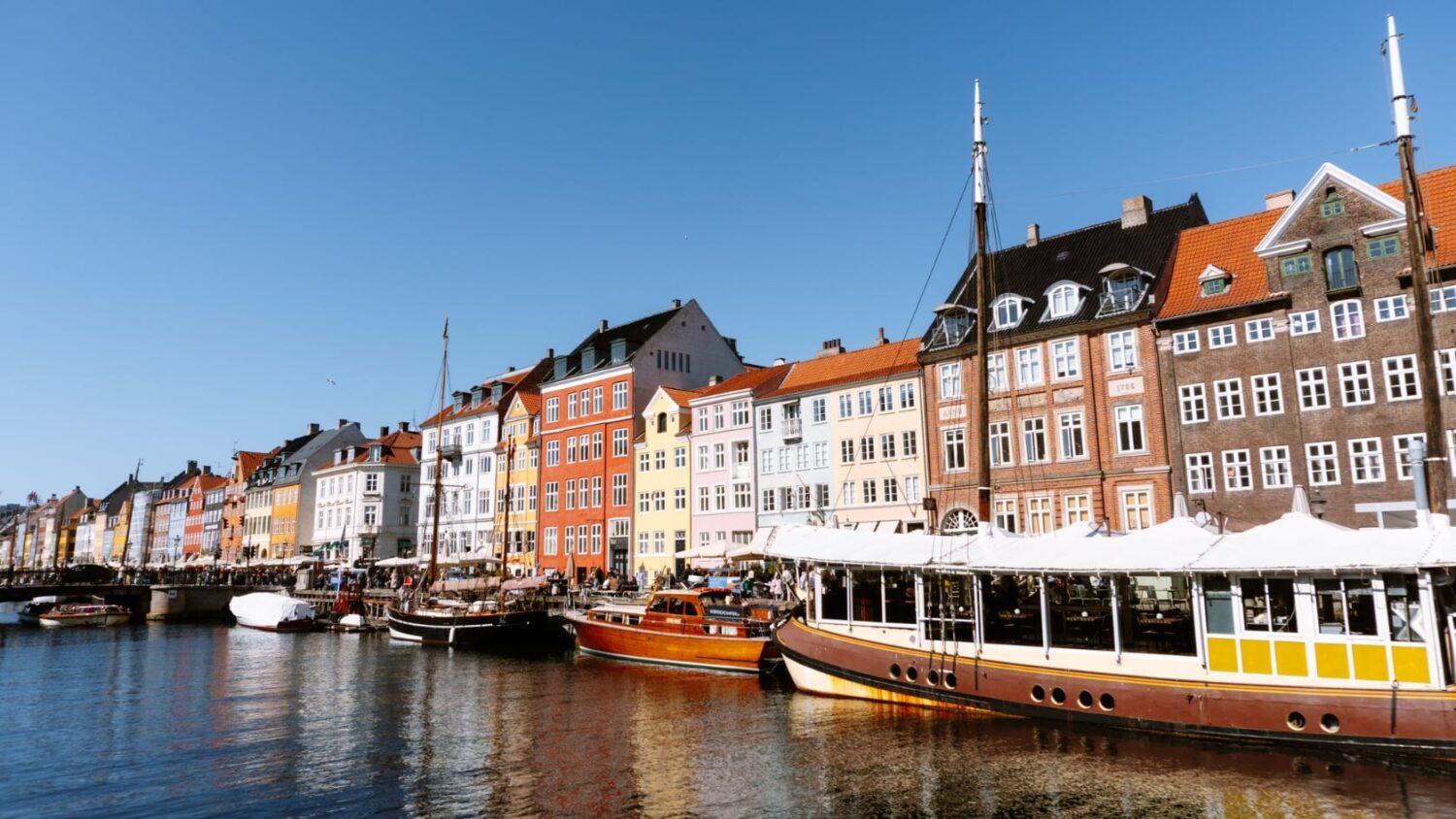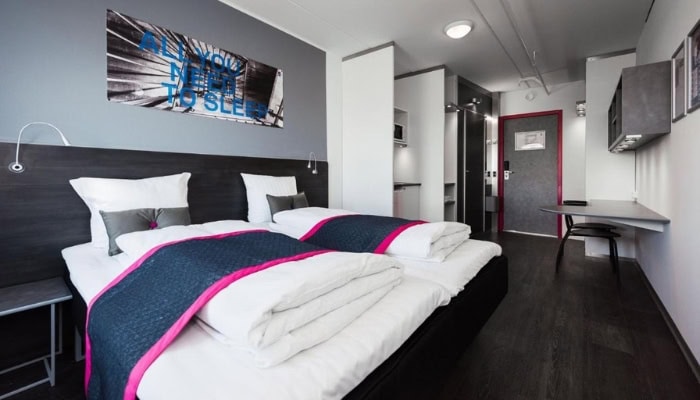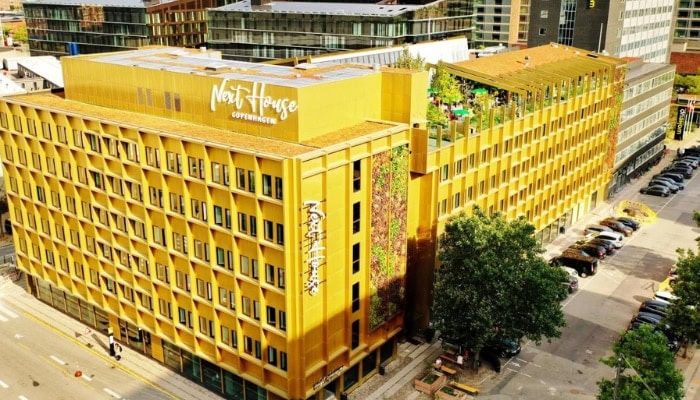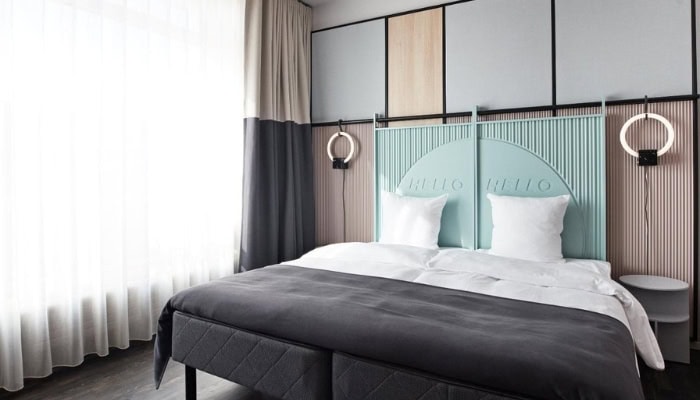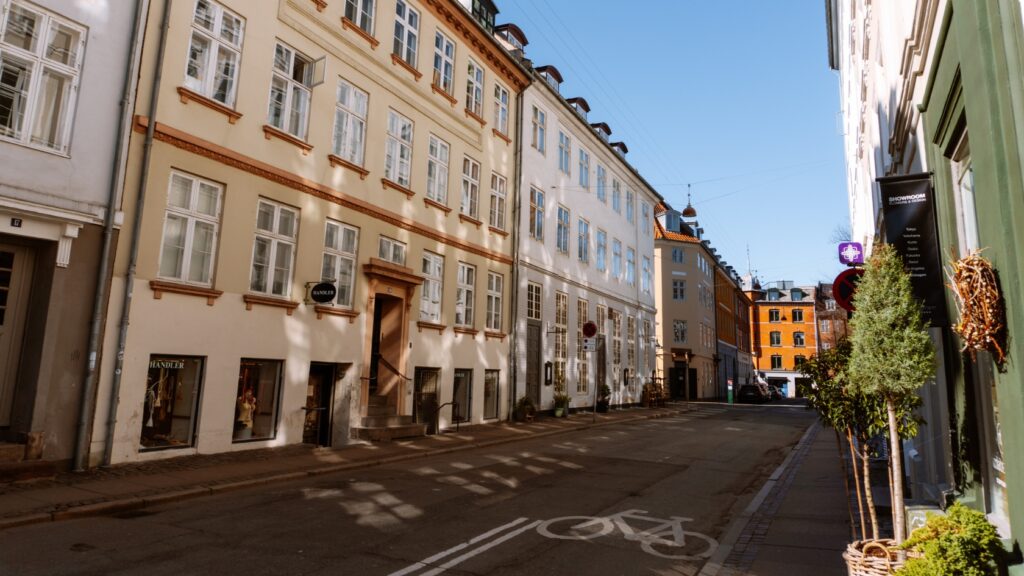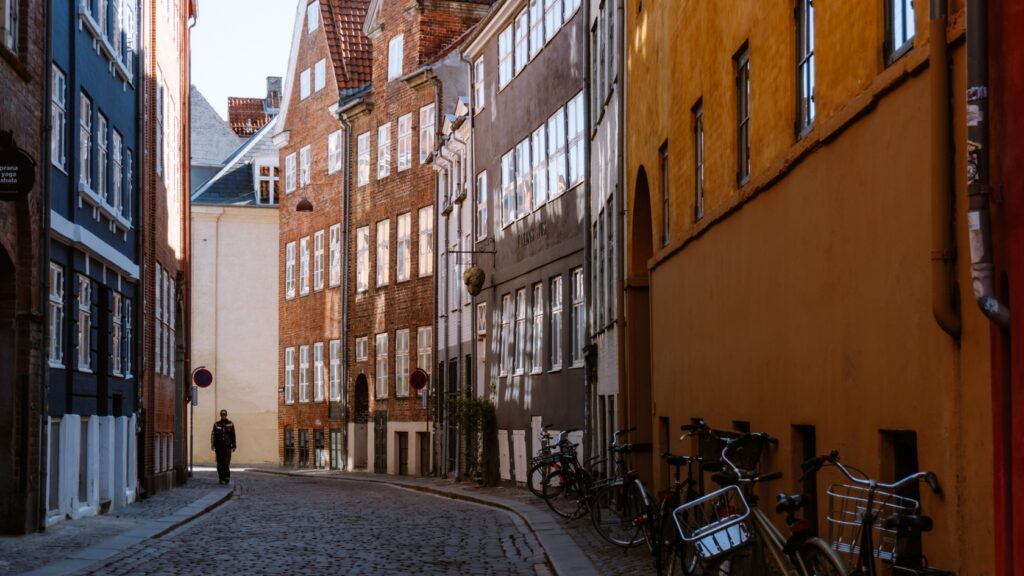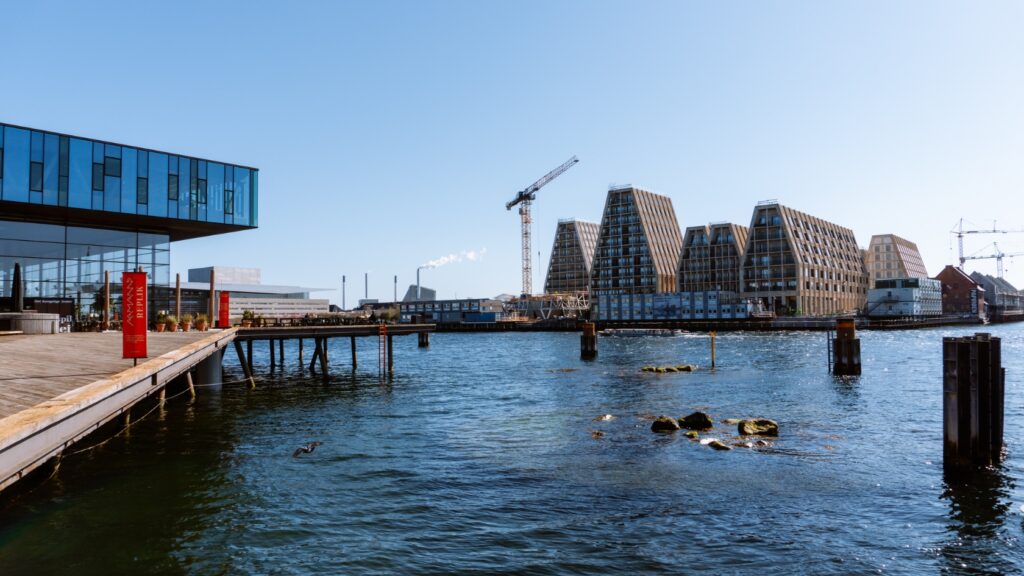Copenhagen, a city with a relaxed atmosphere and the most colourful harbour, Nyhavn, which literally beckons you to walk along the waterfront to the Little Mermaid statue while the cold wind whips your face. Here’s a list of the most beautiful places and things to do in Copenhagen, Denmark.
I absolutely fell in love with Copenhagen. It’s casual, fun and yet doesn’t lack royalty. Everything works here, people are nice, they sit around the waterfront and don’t mind the 10 degrees.
If you’re looking for a destination for your first holiday, Copenhagen is absolutely perfect.
In today’s article we’ll look at the best things to do in Copenhagen. It also includes a map that you can download to your mobile phone, edit and plan the perfect itinerary for your holiday in Copenhagen.
☞ How to save in Copenhagen: Copenhagen is one of the most expensive cities in the world. The Copenhagen Card gets you free entry to over 80 places in Copenhagen, including boat cruises, Tivoli Gardens, Christiansborg, the Zoo, Rosenborg and more. This includes unlimited free transport not only in Copenhagen, but throughout the region (including travel from the airport). Read a detailed review of the card here.
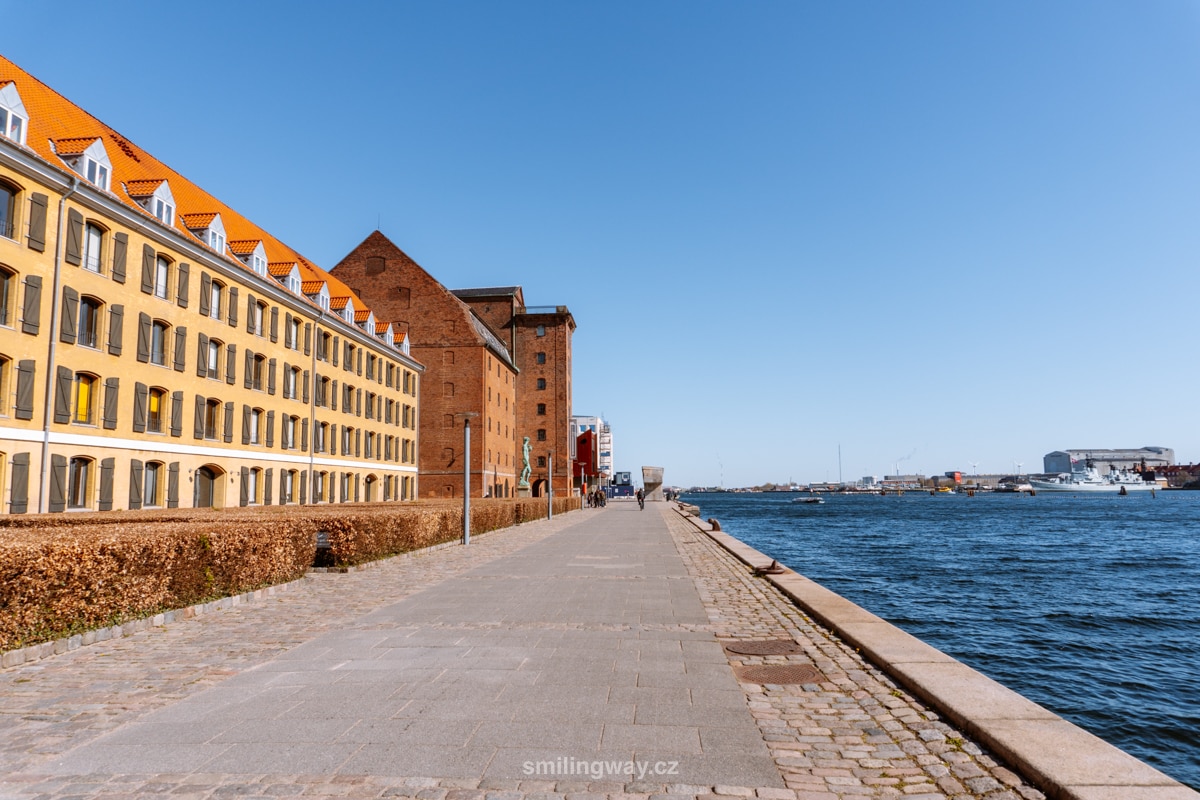
Things to do in Copenhagen: Best places to visit
1. Port of Nyhavn
You can’t start any other way than with Nyhavn harbour, an iconic spot that features in almost every photograph of the city. Nyhavn is not to be missed when visiting Copenhagen.
The harbour is famous for its colourful houses that line the Nyhavn Canal, where several historic ships are moored. Located in the city centre, it is the starting point for boat trips across Copenhagen’s canals.
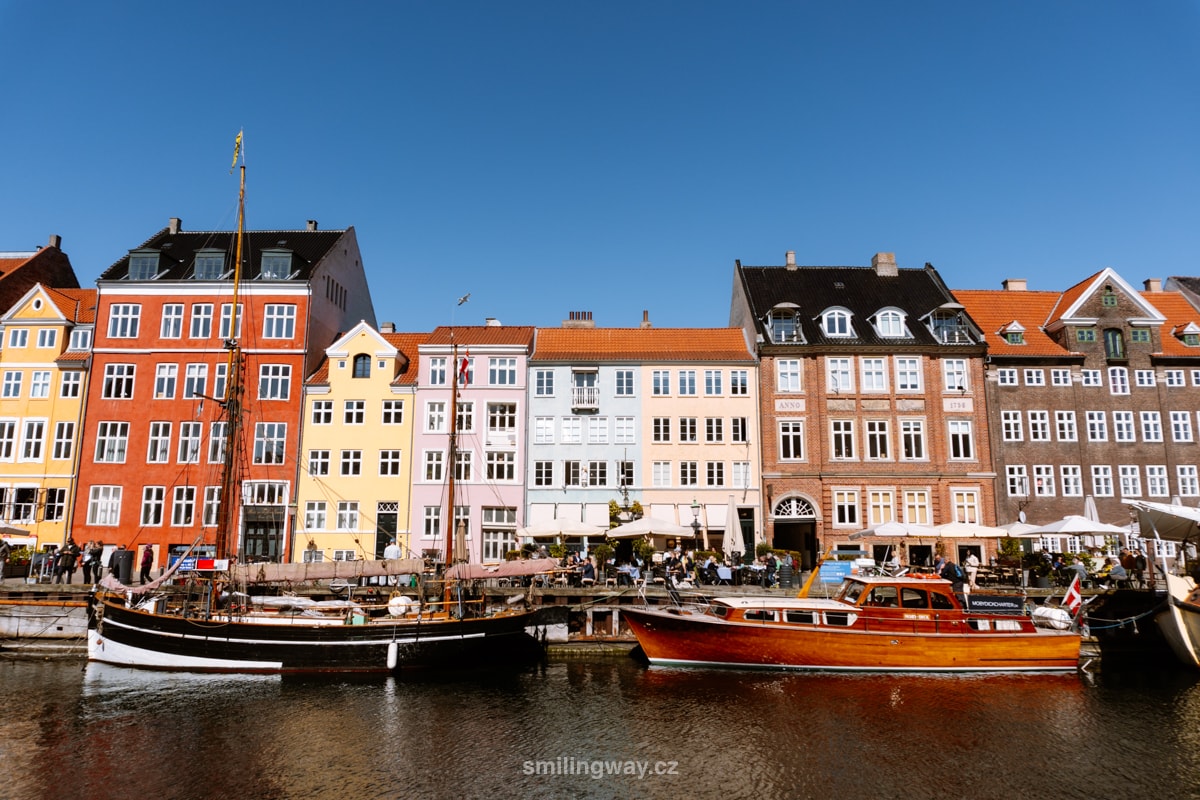
There are shops and restaurants with gardens all around where you can watch the action. Pop into Vaffelbageren Nyhavn for some delicious ice cream. They also have waffles and other goodies (see the map at the end of the article for the location).
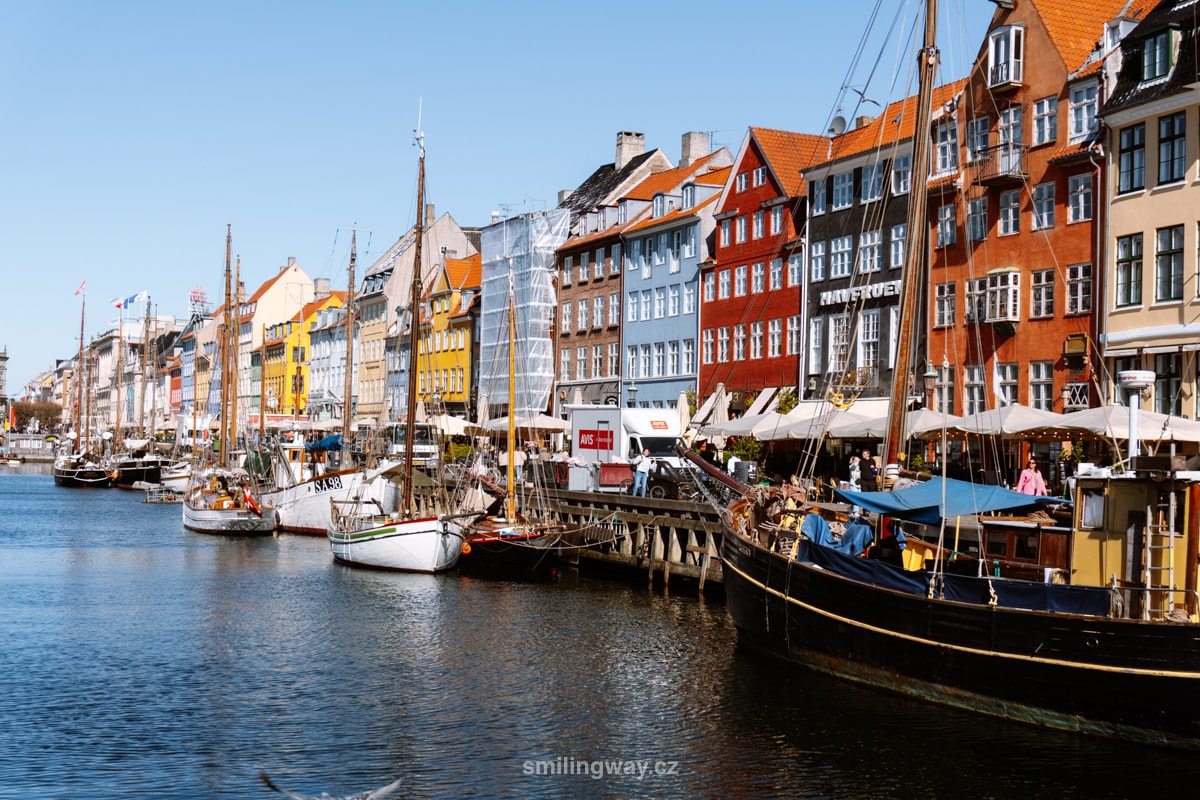
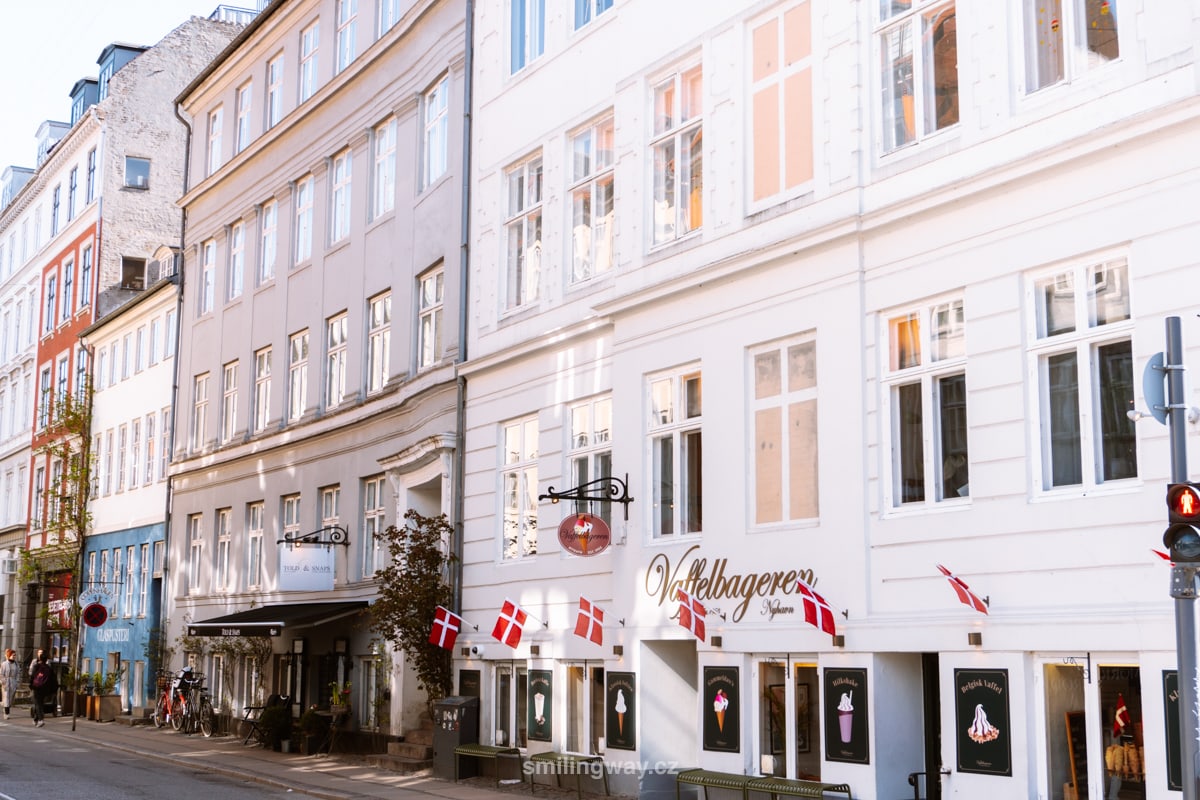
2. Christiansborg – things to do in Copenhagen
Christiansborg is home to the Danish Parliament, the Supreme Court and the Prime Minister’s Office, making it the only building in the world where the three main state institutions are housed under one roof.
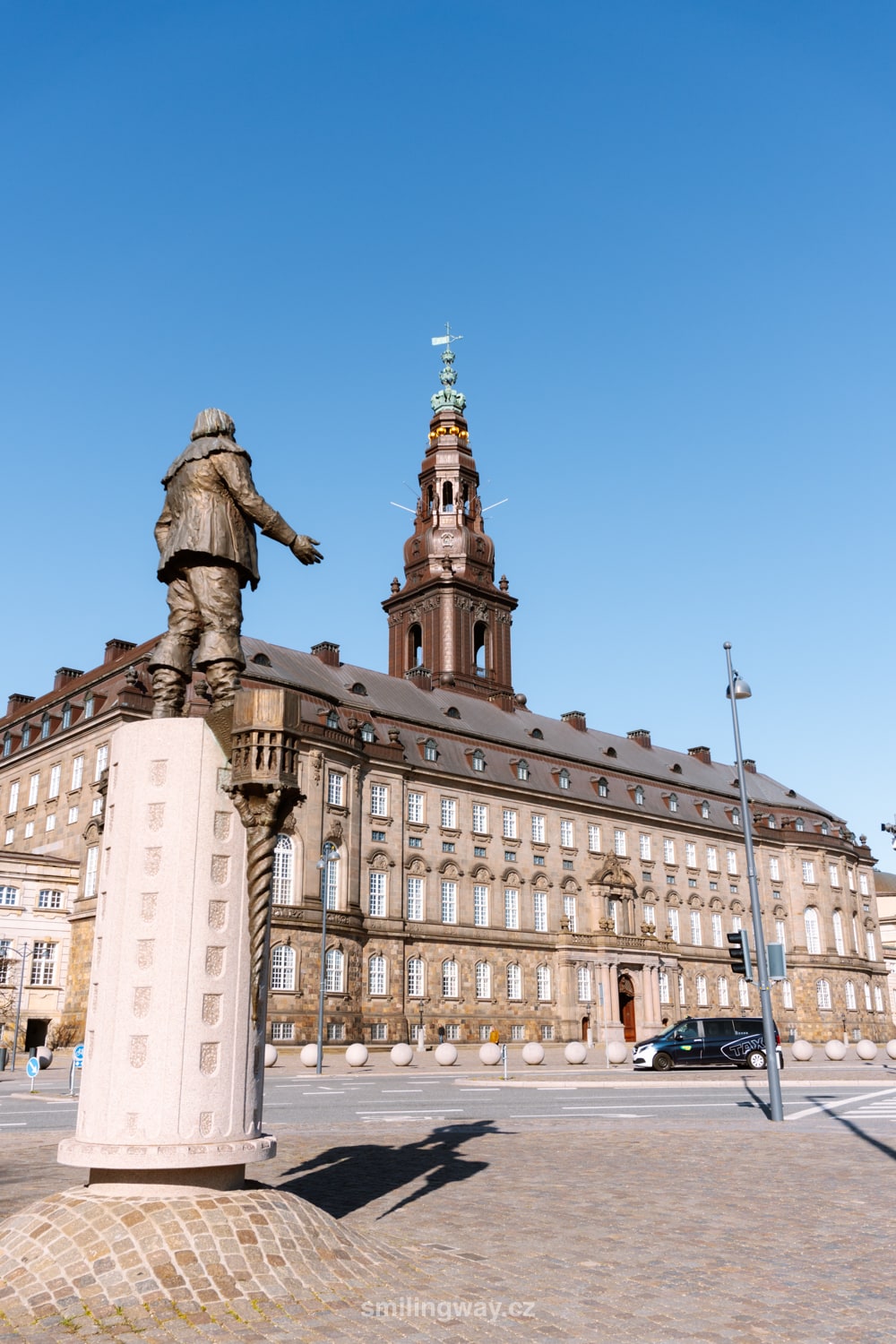
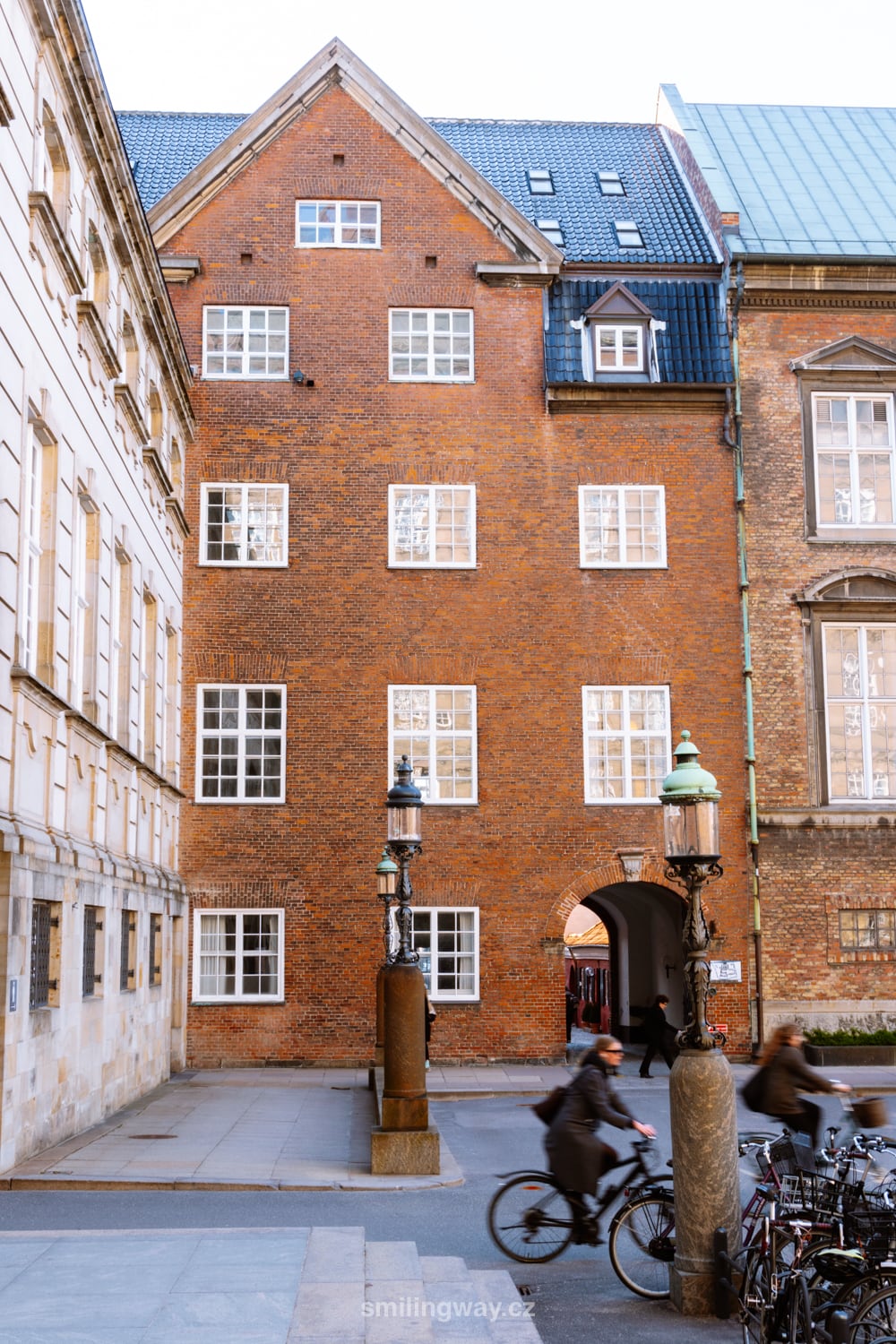
Interestingly, Christiansborg is the fifth building on this site. The locals built it on the ruins of four previous palaces and castles that were rebuilt due to fires and political changes. Its present form was completed in 1928 in the neo-Baroque style.
Visiting Christiansborg is like discovering different chapters of Danish history. Visit the parliament, where the future of the country is decided, or explore the ornate rooms. Or head underground to Christiansborg and explore its archaeological excavations with the remains of the old forts and castles that once stood on the site.
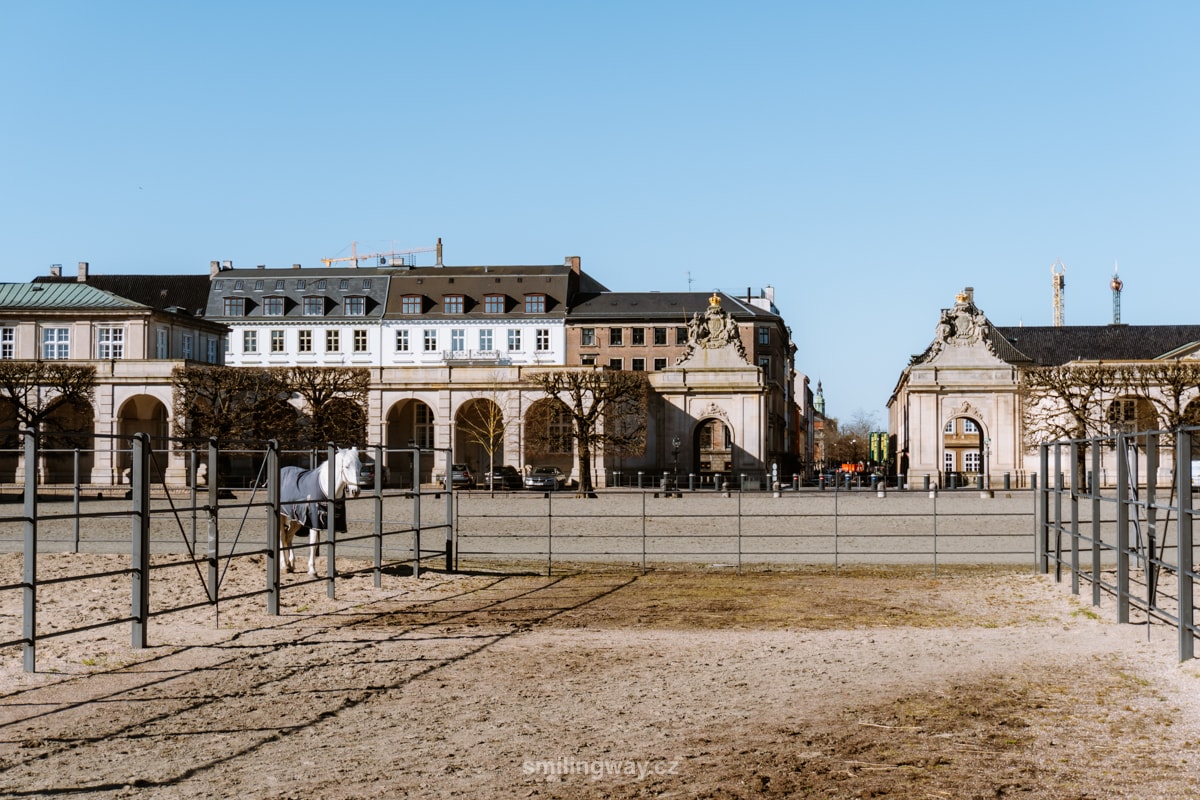
Admission and opening hours Christiansborg
Part of the Copenhagen Card: yes, free entry with Copenhagen Card
Admission to Christiansborg varies depending on what you plan to see.
The combined ticket is the best value if you plan to see everything (royal state rooms, royal banquet kitchen, ruins under Christiansborg and royal stables) – adults 175 DKK, students 155 DKK, children under 18 free
Tickets for individual seats range from DKK 65-105 – click here for more information. Entrance to the tower and church is free.
Visits to Parliament are also free, including guided tours. You can book your seat on the Danish Parliament’s website.
The interior of the castle is usually open from 10:00-17:00, but may change throughout the year (it is usually closed on Mondays in winter). Check the current opening hours on the official website.
Hotels in Copenhagen 😴
3. National Museum of Denmark
Just a few minutes from Christiansborg, you can walk to Nationalmuseet (National Museum of Nationalmuseet ). The museum is housed in a former royal palace, which houses an extensive collection of artefacts spanning 14,000 years of Danish history.
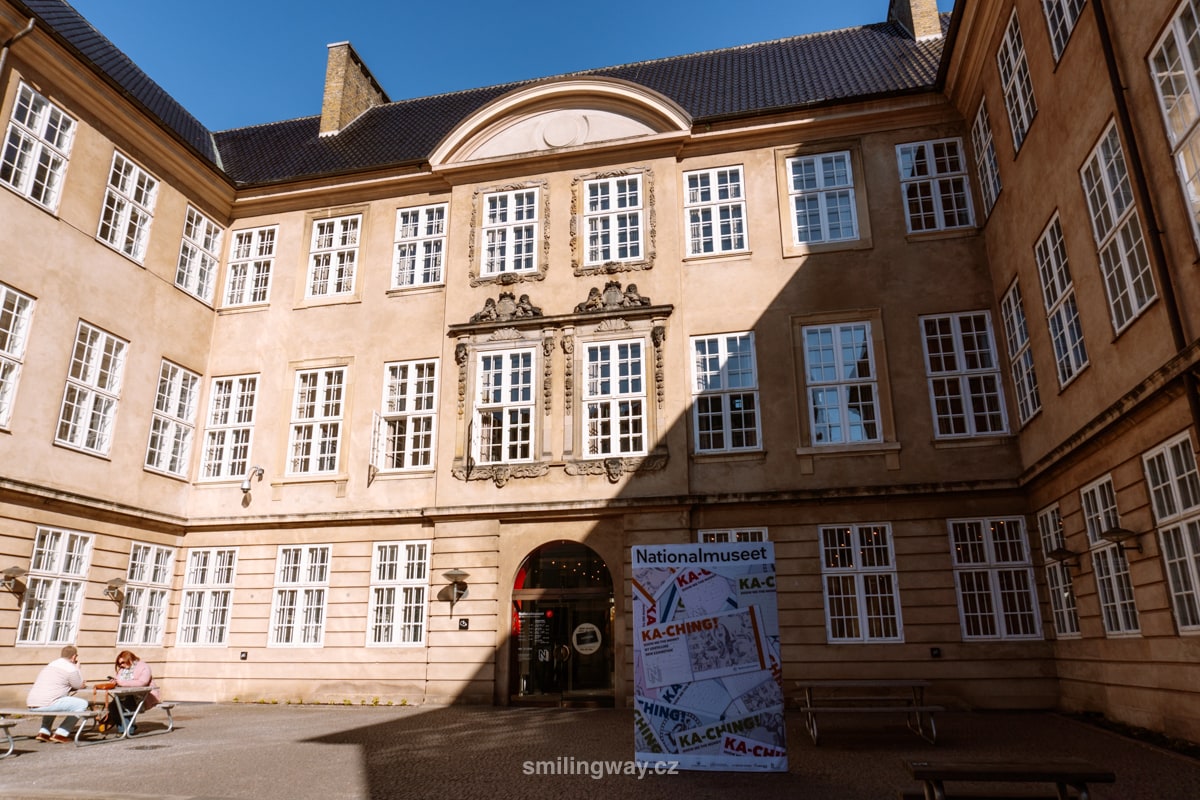
Among the most important exhibits are the famous Golden Horns of Gallehus, which were stolen and melted down in the past, but the museum exhibits their faithful replicas. Get a glimpse into Viking life and see unique exhibitions on the history of Greenland and the Faroe Islands.
Children will have fun in the children’s corner. There is a restaurant in the museum, but feel free to bring your own snack and eat it in the garden.
- Admission to the National Museum of Denmark: Admission is 130 DDK and free for children under 18.
- Opening hours: The National Museum of Denmark is open daily from June to September from 10:00-18:00 and from October to May from Tuesday to Sunday from 10:00-17:00.
- Part of the Copenhagen Card: yes, free entry with Copenhagen Card
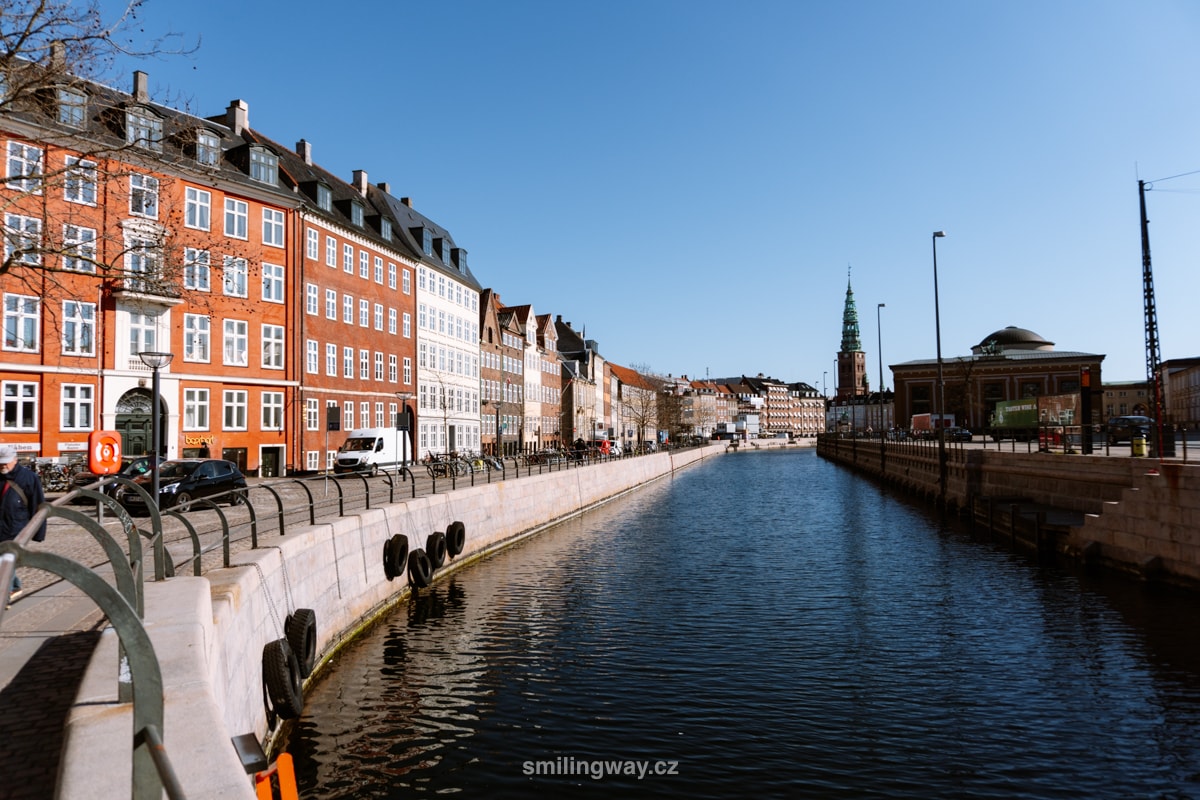
4. Rådhuspladsen
Rådhuspladsen, translated as Town Hall Square, is the imaginary heart of Copenhagen. The large square is surrounded by beautiful buildings, the most important of which is the town hall itself.
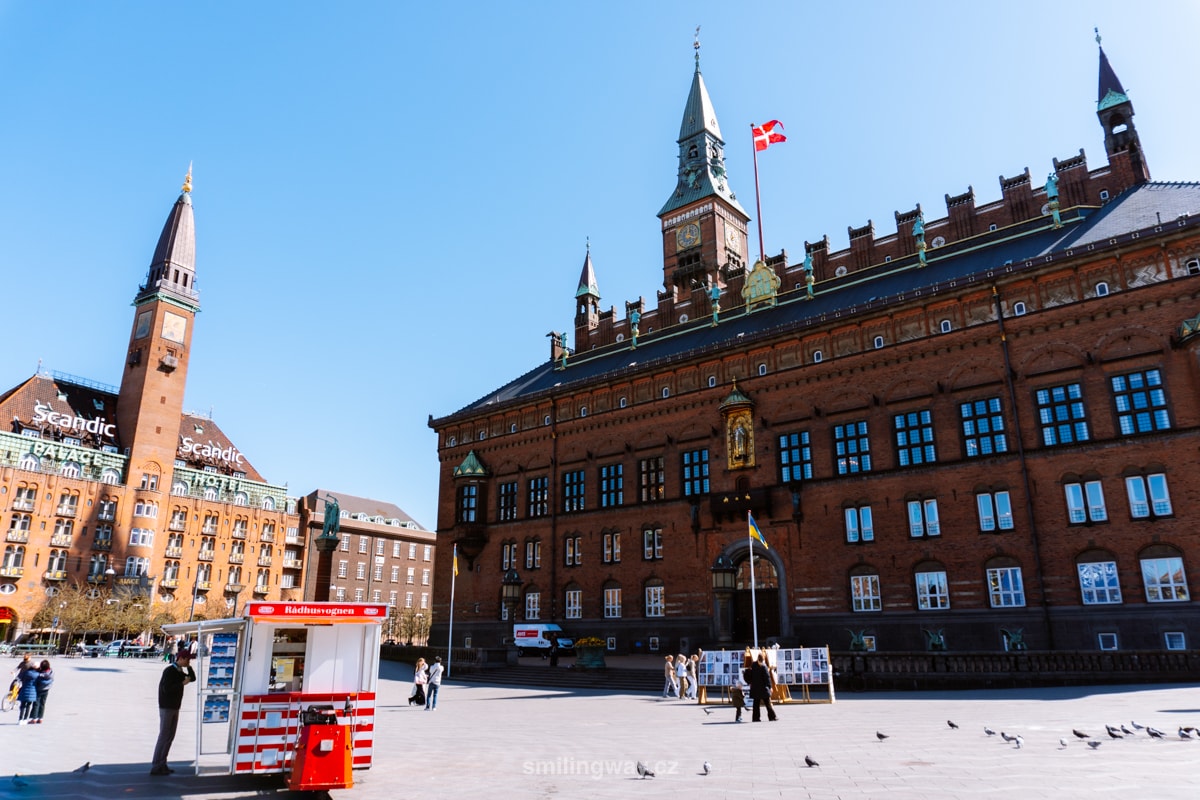
The building was inspired by the town hall of Siena in Tuscany, Italy. Wander its arched corridors, admire the beautiful paintings and decorations, or climb the City Hall tower for one of the best views of Copenhagen.
5. Tivoli Amusement Park and Gardens
Did you know that Denmark is home to two of the oldest theme parks in the world? The first is Dyrehavsbakken, about 10 km north of Copenhagen, the second is Prater Park in Vienna and the third is Tivoli Park, located in the centre of Copenhagen.
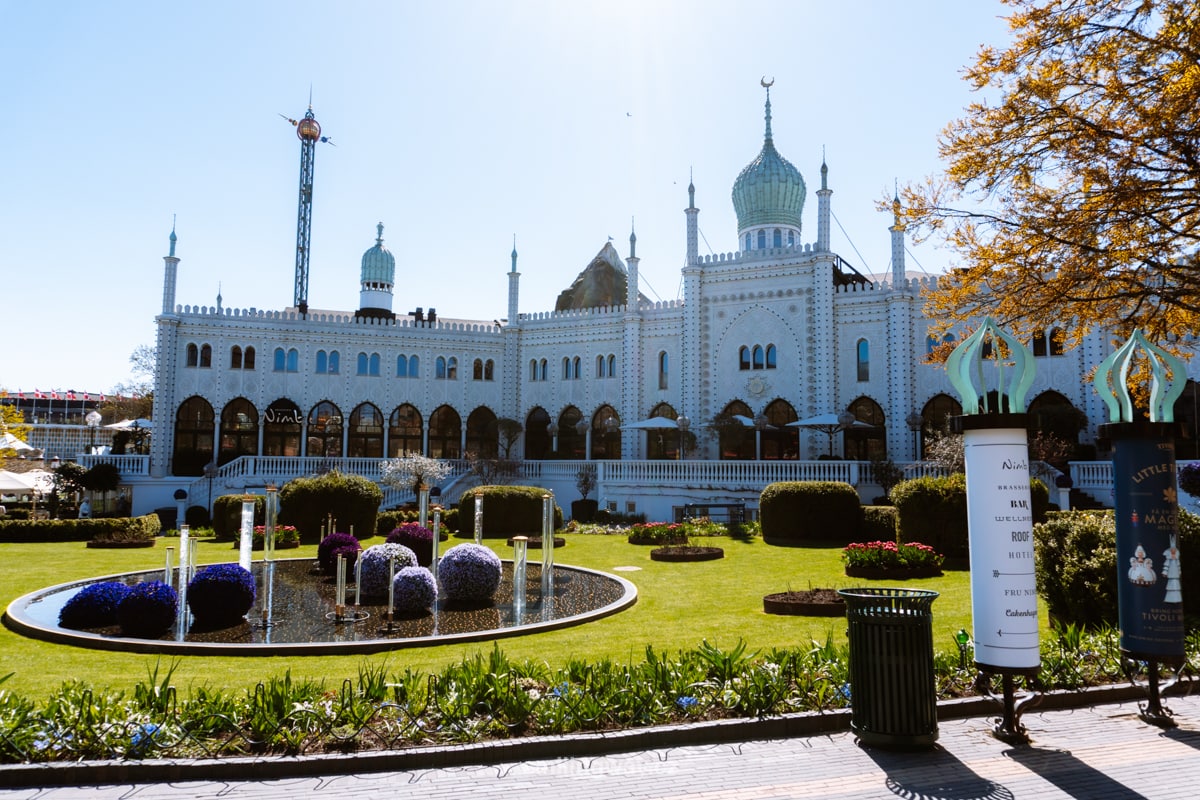
Tivoli Park was first opened in 1843 and remains one of the most popular places in Denmark today. You will meet all age groups here and everyone will find their own thing.
And you don’t have to be a fan of thrill rides at all. As soon as you walk in, the first thing that catches your eye is the beautiful garden full of colourful flowers, small ponds and mature trees. A perfect oasis in the middle of the bustle of the city, where among the attractions there are quiet corners with sun loungers, benches and restaurants.
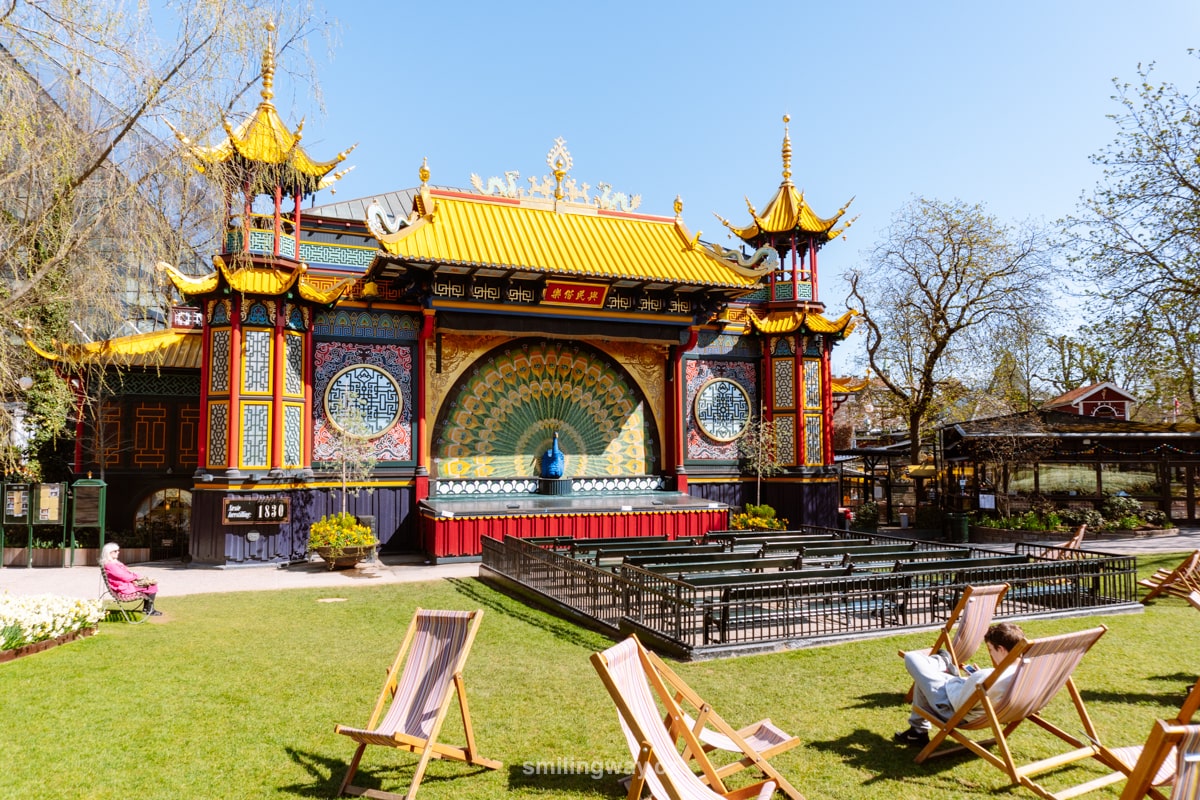
In terms of attractions, Tivoli offers everything from classic carousels and roller coasters to modern adrenaline rides. There is something for everyone, big and small.
Among the attractions are various souvenir stands or refreshment stands, such as the traditional smørrebrød sandwich. There are also a number of restaurants, some of which are located away from the attractions so you can eat in peace.
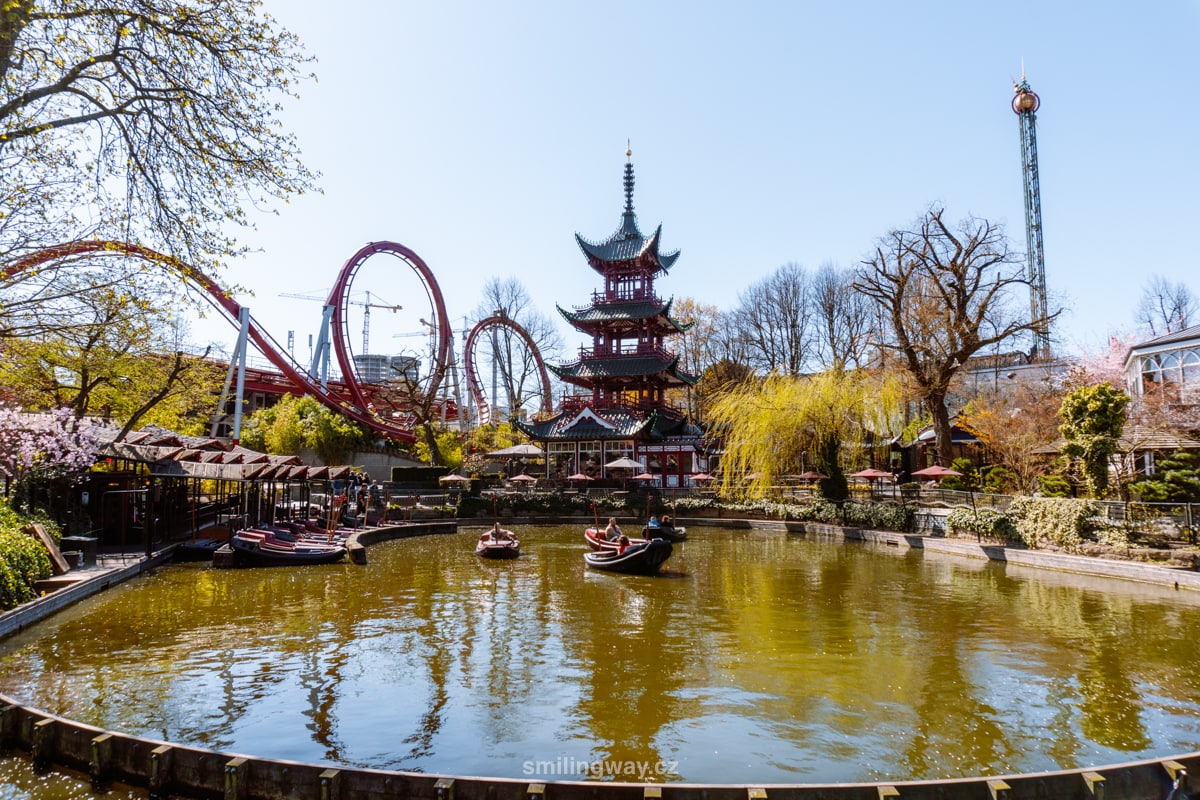
Admission and opening hours of Tivoli Park
Admission to Tivoli Gardens varies depending on what you want to experience:
- Ticket to the Tivoli Gardens without rides – 155 DDK Monday to Friday for everyone over 8 years old and 70 DDK for children 3-7 years old, at the weekend the entrance fee is 165 DDK (for children it remains 70 DDK). For tickets, click here.
- Combination tickets include Tivoli Gardens and unlimited rides – 439 DDK for everyone over 8 years old, 339 DDK for children 3-7 years old, children under 3 get in free. Get your tickets by clicking here.
If you’re only planning to go on one or two rides, it’s better to buy a separate ticket to Tivoli Gardens and pay for individual rides on the spot using your credit card or the Tivoli app.
Included with the Copenhagen Card: yes, the Copenhagen Card includes a separate ticket to Tivoli Gardens. If you would like to enjoy unlimited rides, you need to buy a Turbo Pass for 259 DDK (same price regardless of age).
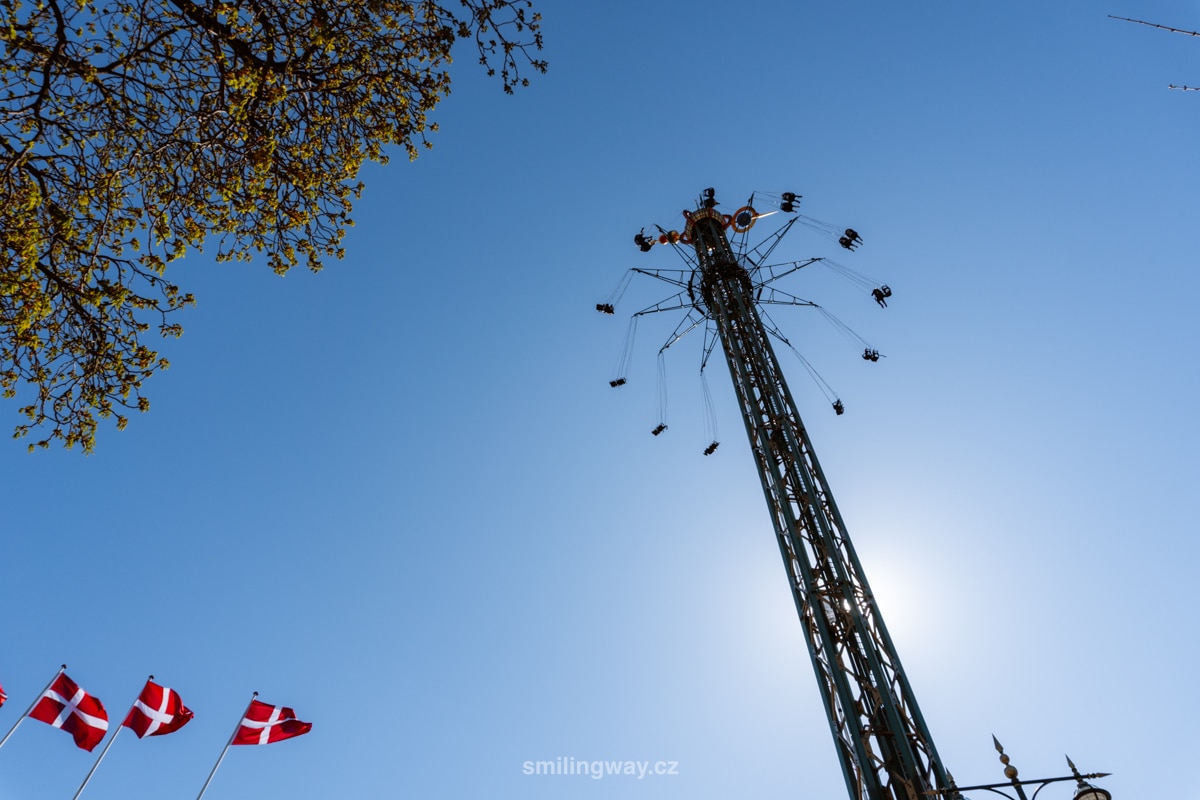
Tivoli’s opening hours vary throughout the year. In the summer season the opening hours are as follows:
- 31 March – 22 June Sunday-Thursday 11:00-22:00, Friday and Saturday 11:00-24:00
- 23 June – 13 August Sunday-Thursday 11:00-23:00, Friday and Saturday 11:00-24:00
- 14 August – 24 September Sunday-Thursday 11:00-22:00, Friday and Saturday 11:00-24:00
Queues can form at the entrance to Tivoli Park, especially in high season from April onwards. When you buy a ticket in advance, you will go through the middle entrance, where you will show the printed tickets on your mobile phone or scan the QR code from your mobile phone. Tickets purchased in advance are valid for the whole day (you can come at any time) and are the same price as if purchased at the door.
6. Christianshavn
On the eastern outskirts of Copenhagen is Christianshavn, an authentic neighbourhood that has been nicknamed the “Venice of Copenhagen”. Stroll along the picturesque canals lined with preserved old buildings, where colourful boats and yachts lazily roam. Walk down to the waterfront where there are tables and various seating areas to sit by the water and just relax with the locals.
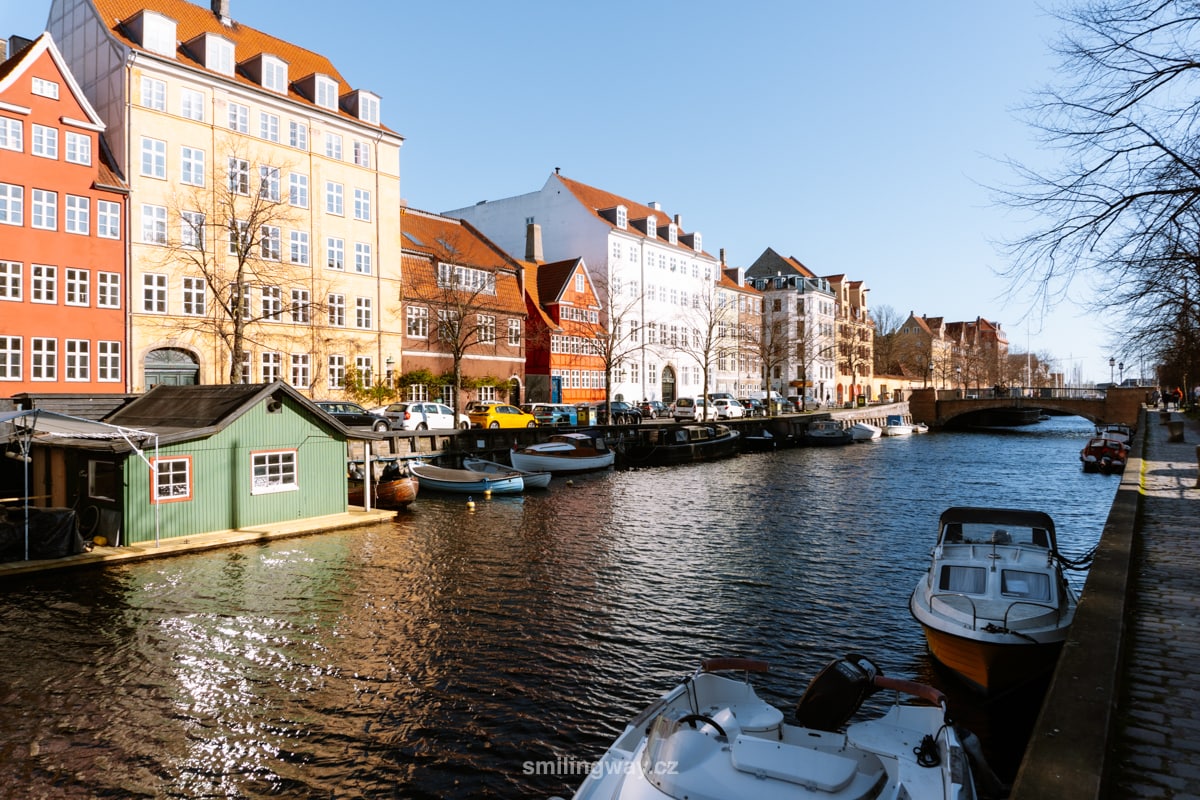
Christianshavn is easily reached from Nyhavn Harbour – just cross the modern bridge. Right by the bridge in Christianshavn is Broens Gadekøkken with refreshment stands and outdoor seating. Here you can try local specialties, burgers, nachos, burritos and other delicacies from around the world or have a drink. It’s not the cheapest, but it tastes great.
Another bridge connects Christianshavn to Christiansborg and the old stock exchange building, but it’s also easy to get here by public transport.
7. Church of Our Saviour
When in Christianshavn, don’t miss the Church of Our Saviour (Vor Frelsers Kirke). Baroque church from 17th century, which is famous for its spiral tower with external stairs.
As you climb up to the viewing gallery, you pass the large church bells and the chimes, which play soft melodies thanks to 48 bells.
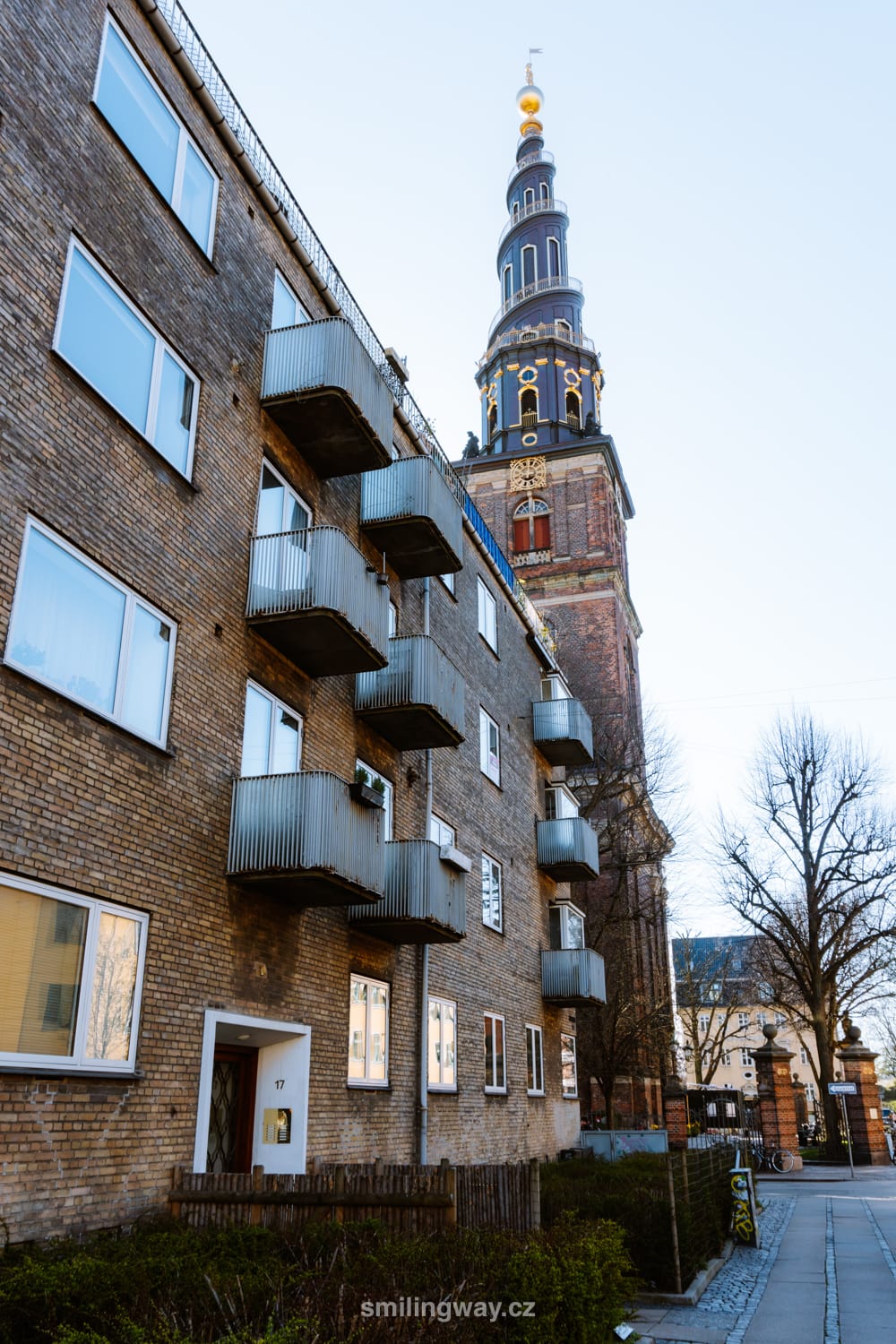
Please note: Access to the tower is not suitable for those who suffer from a fear of heights and do not feel comfortable in confined spaces. There are 400 narrow stairs up to the tower, with the last 150 steps outside overlooking Copenhagen.
- Admission to the church: free
- Admission to the tower: 69 DDK, 53 DDK for students and seniors over 65, 20 DDK for children 5-14, under 5 free
- Opening hours: 9:00-20:00, the tower is closed in January
- Part of the Copenhagen Card: yes, free entry with Copenhagen Card
8. Christiania
We come to the most controversial place to visit in Copenhagen. For some one of the top attractions in Copenhagen, for others (including me) a place that evokes more contradictory than positive reactions.
Freetown Christiania, often referred to as Christiania, is a place with an alternative lifestyle and bohemian atmosphere. Located in Christianshavn, it was founded in 1971 by a group of local artists and activists who occupied a former military barracks with the aim of creating a community based on the ideals of freedom, creativity and collective decision-making.
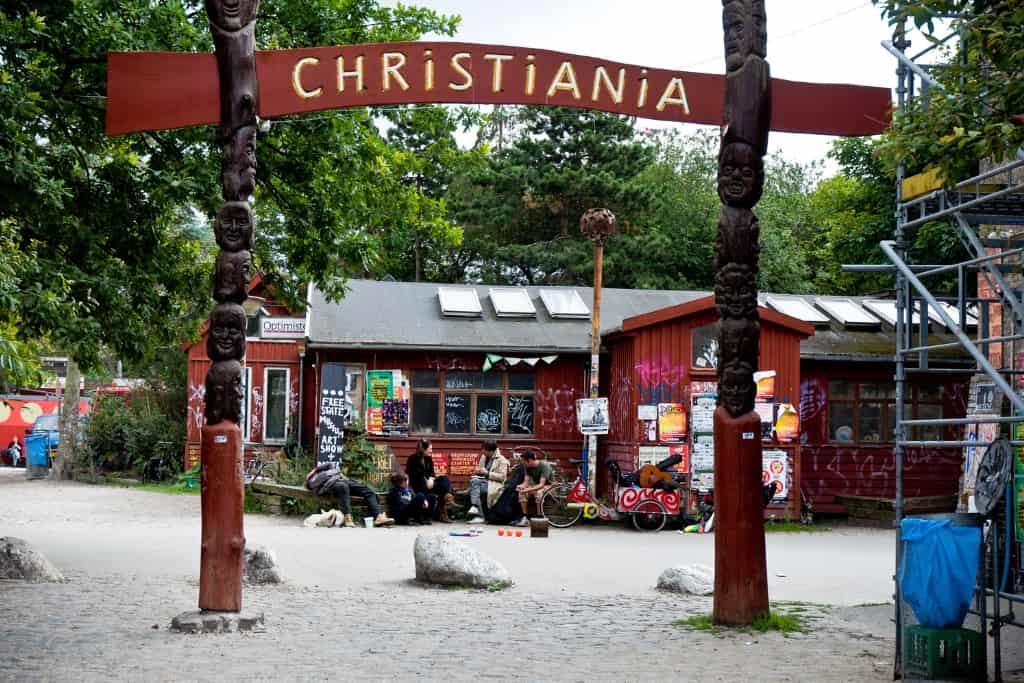
Christiania covers an area of 34 hectares and is home to over 800 residents who live in colourfully painted houses and communal buildings. The neighbourhood is known for its eco-friendly philosophy, with many homes built from recycled materials and a strong emphasis on sustainability and living in harmony with nature.
My subjective impression is that Christiania gives a relatively cold impression, there are a lot of marijuana dealers around and the locals are not friendly unless you want to buy something from them. But if you like the hippie vibe, consider visiting. The place is not suitable for children.
- Admission: free
- Please note: There are a number of locations where photography is prohibited. Frequent police raids.
Read: Copenhagen Transport Guide
9. NY Carlsberg Glyptoteket
Do you love art and beautiful objects? Then you can’t miss the Glyptoteket Art Museum, housed in an impressive building in the centre of Copenhagen. Inside, you’ll be treated to a collection of more than 10,000 works, from ancient sculptures to modern paintings.
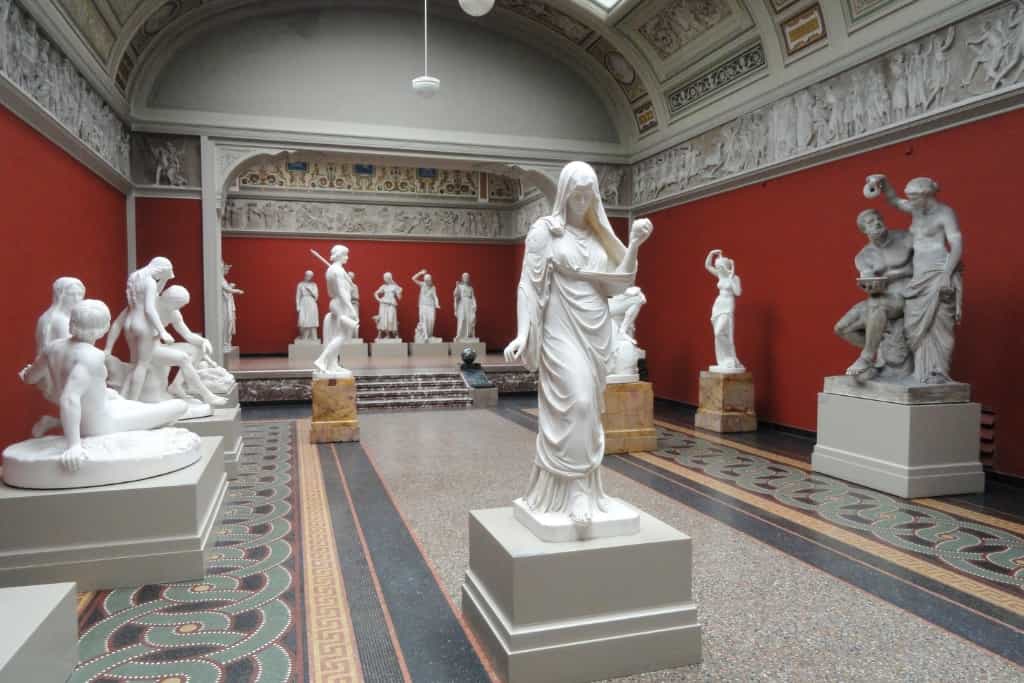
In the middle of the museum is a glass-enclosed conservatory full of exotic plants and water fountains. A wonderful place where you can relax between viewing the various collections.
You can go up to the roof and enjoy the view of Copenhagen. The view is not as good as Christiansborg or Rundetaarn, for example, but it’s still worth it if you’re here. The museum also has a café.
- Price: admission to Glyptoteket is 125 DDK, 95 DDK for students and under 18 years free. Free admission for everyone on the last Wednesday of the month.
- Opening hours: the museum is open from Tuesday to Sunday from 10:00-17:00 and on Thursdays until 21:00.
- Part of the Copenhagen Card: yes, free entry with Copenhagen Card
10. Amalienborg
Amalienborg is one of the most beautiful places to see in Copenhagen. The Royal Palace in the city centre, a symbol of the Danish monarchy, one of the oldest in the world.
Amalienborg is an elegant complex of four identical buildings surrounding a circular square, in the centre of which stands a statue of King Frederik V on horseback. Today, two of the palaces are used as residences of the Danish royal family, and the Christian VIII Palace houses the Amalienborg Museum.
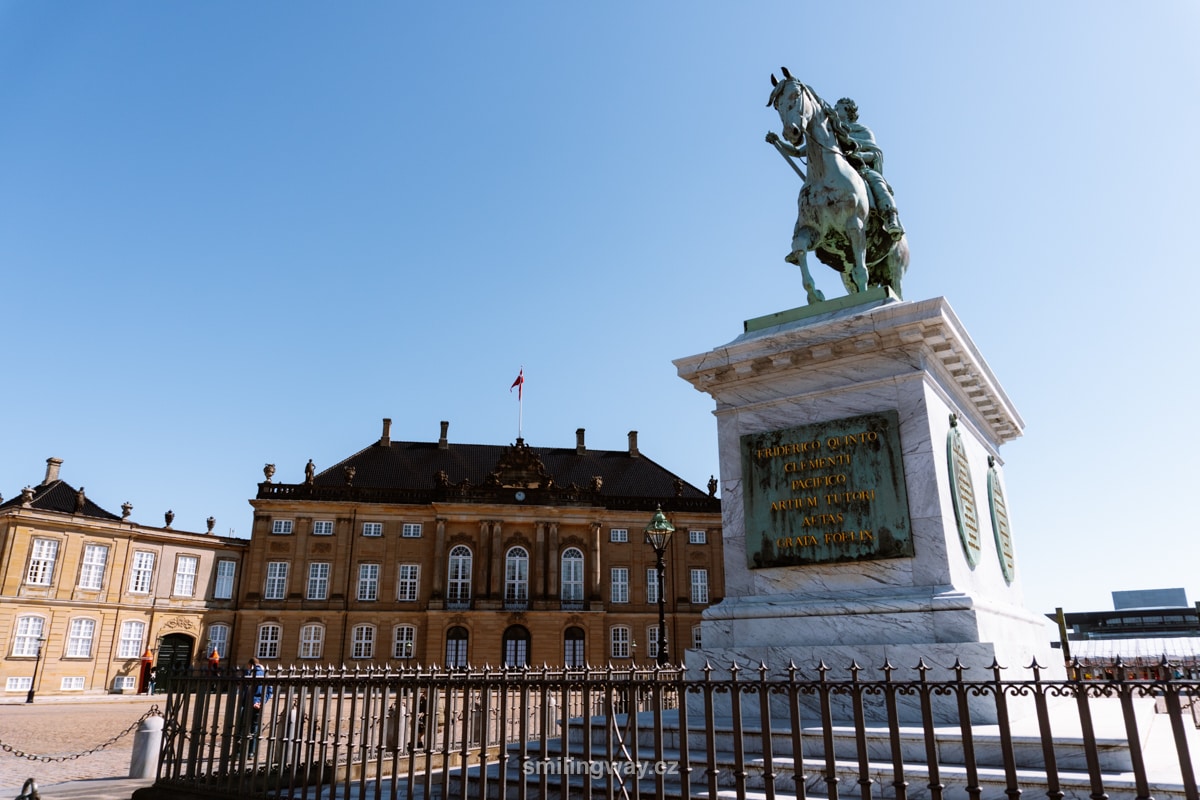
Inside the museum, you can explore the rich interiors, including the magnificent library and the Gala Hall, which is used by the Royal Family for special occasions.
At noon, don’t miss the Changing of the Guards, which takes place in front of the Christian VIII Palace in the northwest corner of the square. Come early, because it’s really crowded just before 12 o’clock and you’d hardly see anything.
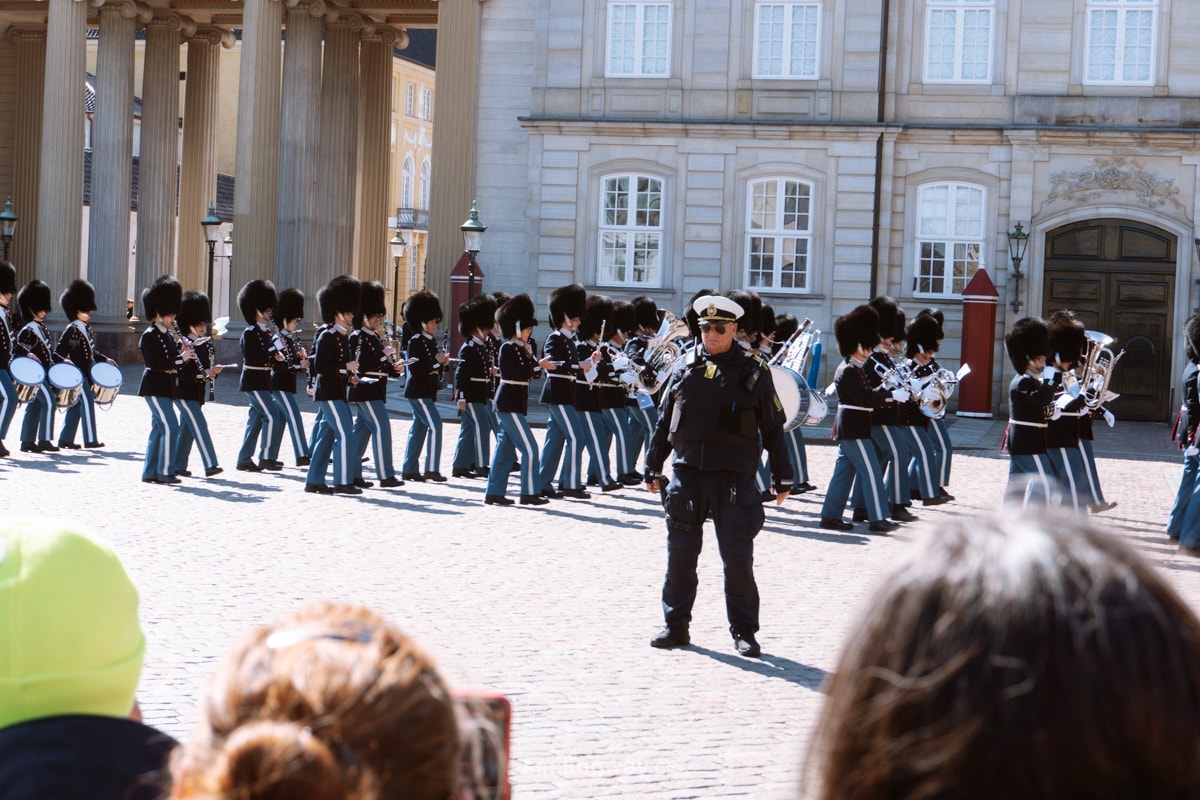
Admission and opening hours Amalienborg
- Admission to the Amalienborg Museum is 125 DDK and discounted for students 80 DDK. Children under 18 years of age are admitted free of charge. You can buy a combined ticket to Amalienborg and Rosenborg at a discounted price.
- Opening hours are very variable and change throughout the year. Check here for current opening hours.
- Part of the Copenhagen Card: yes, free entry with Copenhagen Card
How to save in Copenhagen: Copenhagen is one of the most expensive cities in the world. Thanks to the Copenhagen Card The Copenhagen Card gives you free entry to more than 80 places in Copenhagen, including boat cruises, Tivoli Gardens, Christiansborg, the zoo, Rosenborg and more. This includes unlimited free transport not only in Copenhagen, but throughout the region (including travel from the airport). Read a detailed review of the card here.
11. Frederik Kirke
From Amalienborg Palace you can see Frederiks Kirke dome peeking out, which is just 2 minutes away.
Frederiks Kirke put between 18. and 19th century in the Baroque style. 1 Danish marble was used for its construction, which gives the church the nickname “Marble Church”. With a diameter of 31 metres, its dome is one of the largest in northern Europe. They were inspired by St. Peter’s Basilica in the Vatican when building the church.
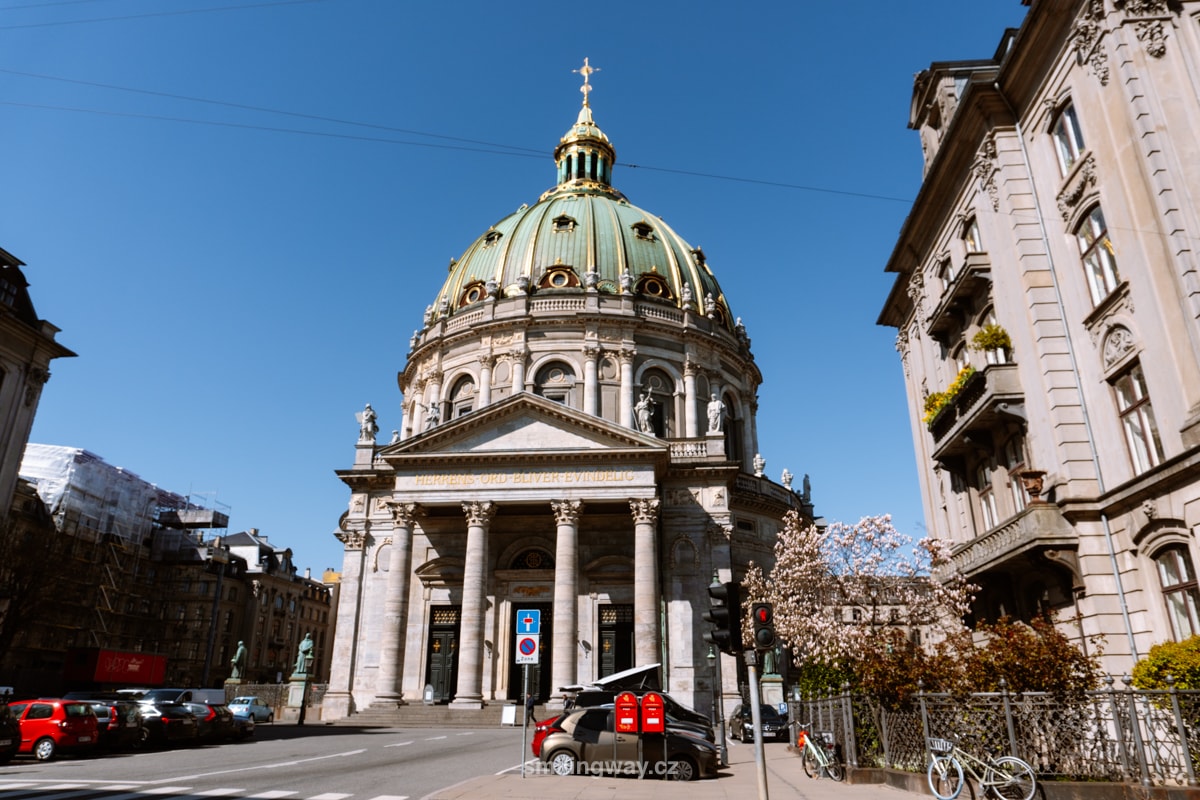
Inside, the church contains beautiful frescoes, gilded details and tall marble columns.
- Admission: entrance to the church is free and you can even go up into the dome – click here for more information about visiting the dome.
- Opening hours: the Marble Church is open Monday to Thursday and Saturday 10:00-17:00, Friday 12:00-17:00 and Sunday 12:30-17:00.
12. Rosenborg and the King’s Garden
Rosenborg, a majestic castle with towers and gardens, is one of the most beautiful sights in Copenhagen. The castle was built by King Christian IV. as his summer residence, so inside you can see many important historical objects, including Danish crown jewels, royal portraits, beautiful furniture and a collection of weapons and armour.
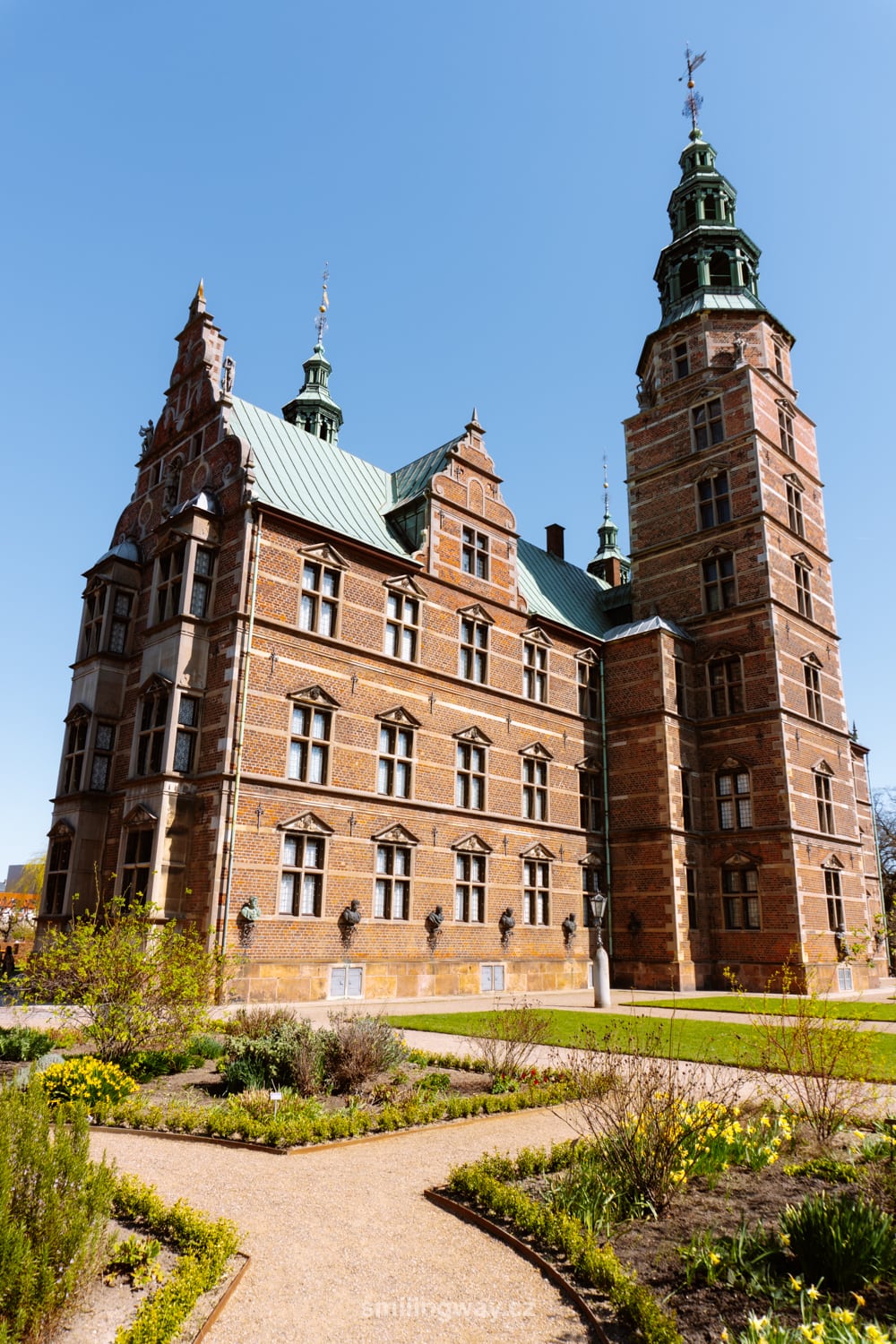
Rosenborg is surrounded on one side by the beautiful Kongens Have (King’s Garden), which is the oldest and most popular city park in Copenhagen. The gardens are full of flower beds, old trees, statues and small lakes where locals go for picnics and walks.
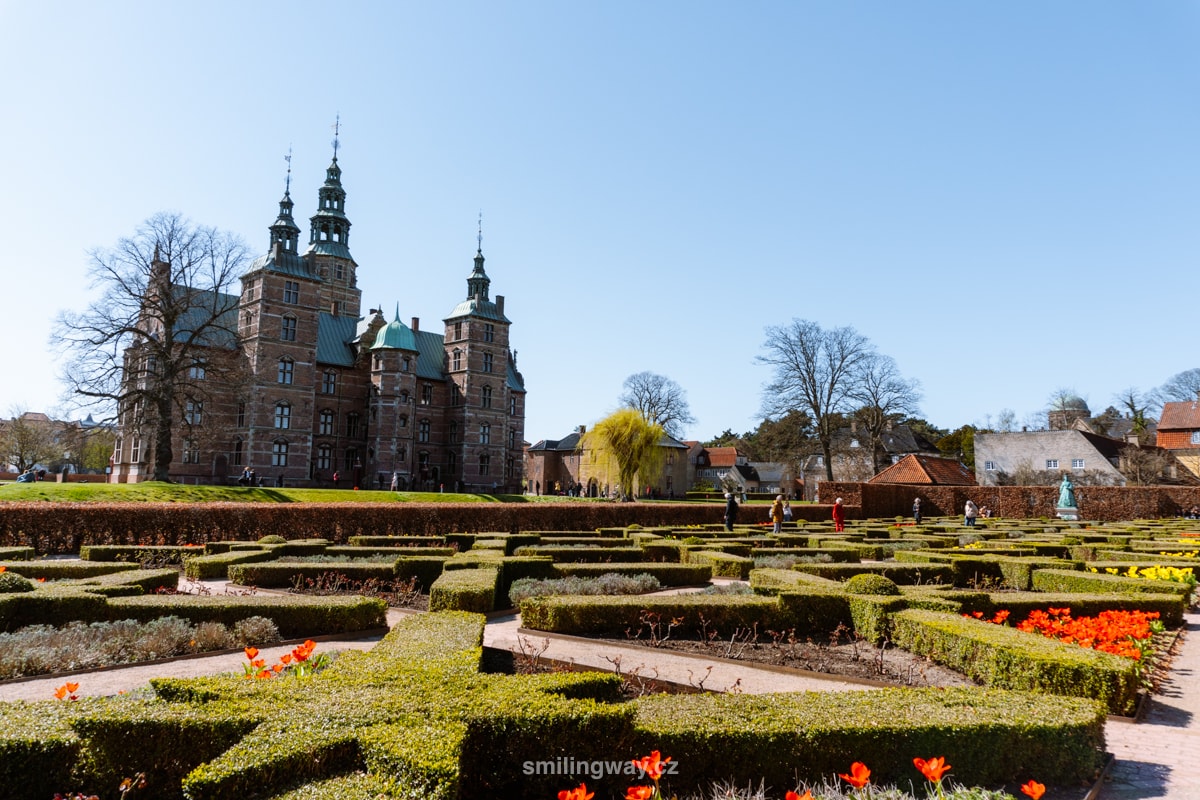
Please note: It is possible that the gate from Rosenborg to the King’s Garden will be closed – you would then have to leave the castle grounds again and enter the King’s Garden from the outside.
Admission and opening hours Rosenborg
- Admission to Rosenborg is 140 DDK and discounted for students 90 DDK. Children under 18 years of age are admitted free of charge. You can buy a combined ticket to Amalienborg and Rosenborg at a discounted price.
- Opening hours are very variable and change throughout the year. Check here for current opening hours.
- Part of the Copenhagen Card: yes, free entry with Copenhagen Card
Hotels in Copenhagen 😴
13. Botanical Garden
Just opposite Rosenborg is the Botanical Garden (Botanisk Have), which is part of the National Museum of Natural History. A bit off the beaten track for tourists, a place for locals to come and relax and sit in the grass among the 13,000 plants that spread over 10 hectares.
The dominant feature of the Botanical Garden is the Palmehuset (Palm House), a historic greenhouse from the 19th century. In summer, the Butterfly House is also part of the visit.
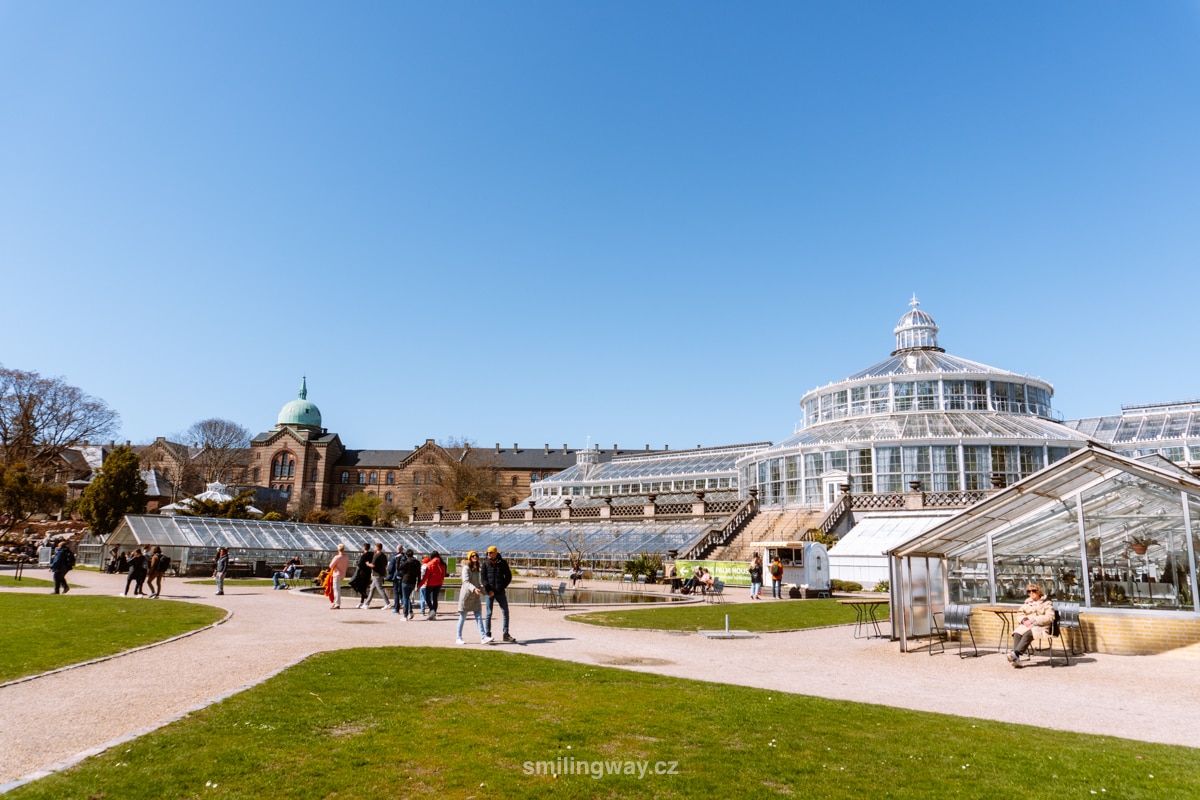
- Admission: entrance to the Botanical Garden is free. There is only a fee for visiting Palmehuset if you are interested – 70 DDK and 40 DDK for students and children aged 3-17.
- Opening hours: 8:30-18:00
- Part of the Copenhagen Card: yes, free entry to Palmehuset with Copenhagen Card
14. Copenhagen Zoo
Copenhagen Zoo (København Zoo) was founded in 1859 and is one of the oldest zoos in the world. It is home to more than 4,000 animals from all over the world, divided by ecosystems, from African savannah to Arctic tundra to tropical rainforest.
Admire lions, elephants and giraffes in the African Pavilion, come face to face with polar bears in the Arctic Habitat, or take a walk through a rainforest full of colourful birds, monkeys and exotic plants.
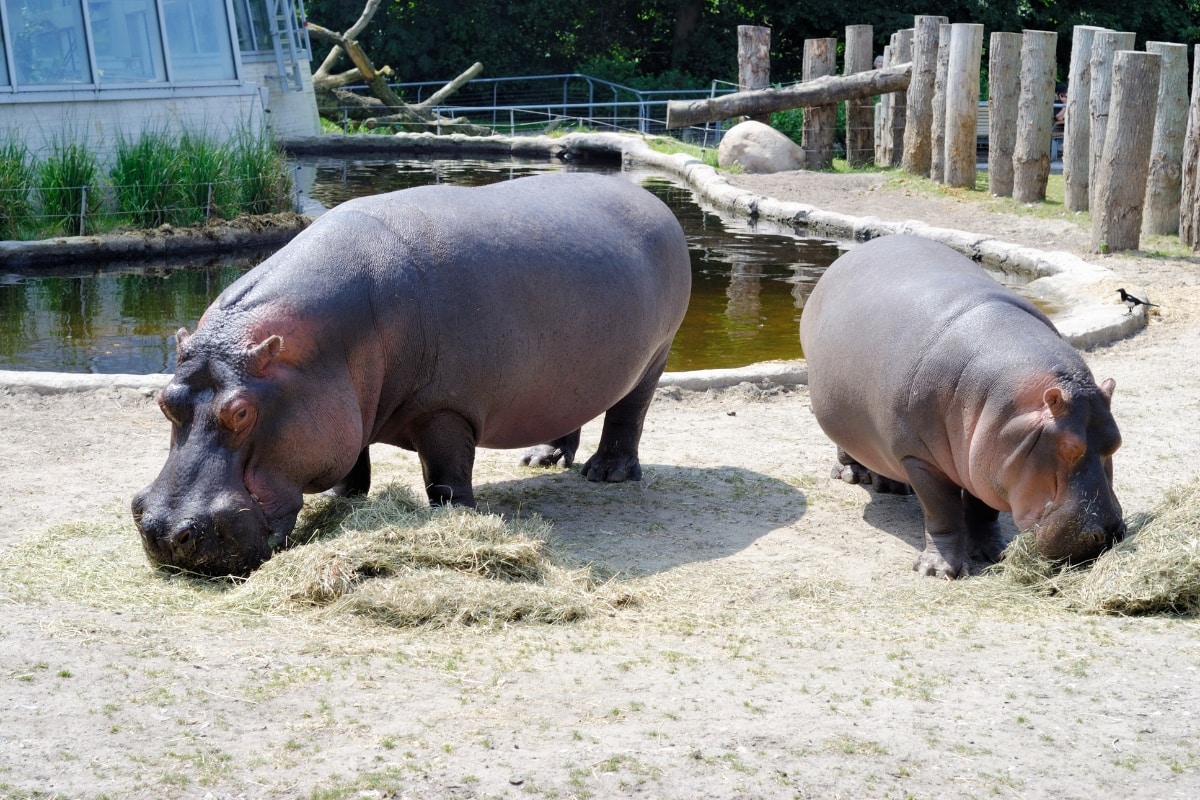
The biggest draw is the endangered giant pandas, because Copenhagen Zoo is one of the few zoos in the world that is allowed to breed pandas.
Copenhagen Zoo is one of the best places to visit in Copenhagen with kids. The animals have free range and are almost at your fingertips.
- Admission: admission is 239 DDK and 139 DDK for children 3-11 years.
- Opening hours: the zoo is open daily, but opening hours vary according to the season.
- Part of the Copenhagen Card: yes, free entry with Copenhagen Card
15. Kongens Nytorv and Strøget
Explore the historic centre, which is full of winding streets lined with colourful houses. One is more charming than the other (Magstræde is particularly charming), with small shops and cosy cafés where you can have a Danish smørrebrød or a classic kanelsnegl (cinnamon snail).
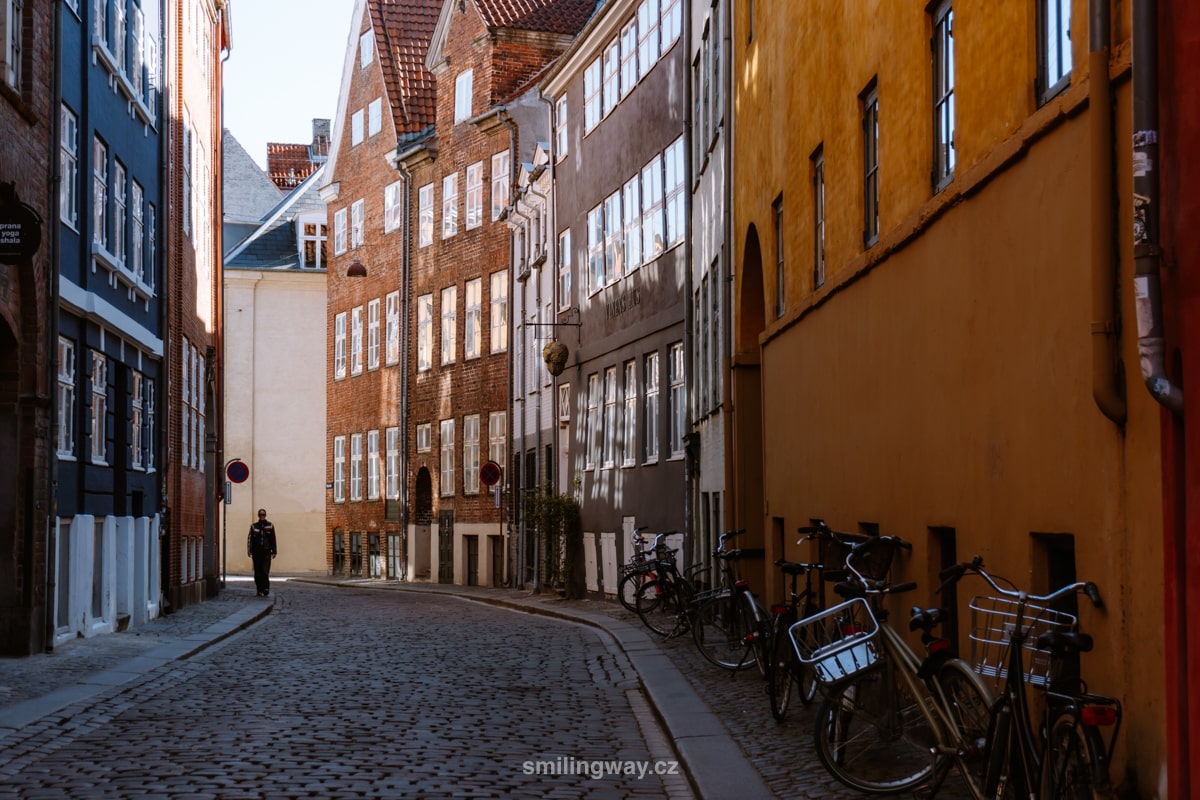
Plus, it’s largely pedestrian-only, so you can just wander and enjoy.
The centre is around the pedestrianised Strøget Avenue, between the vast Kongens Nytorv Square and Copenhagen Cathedral.
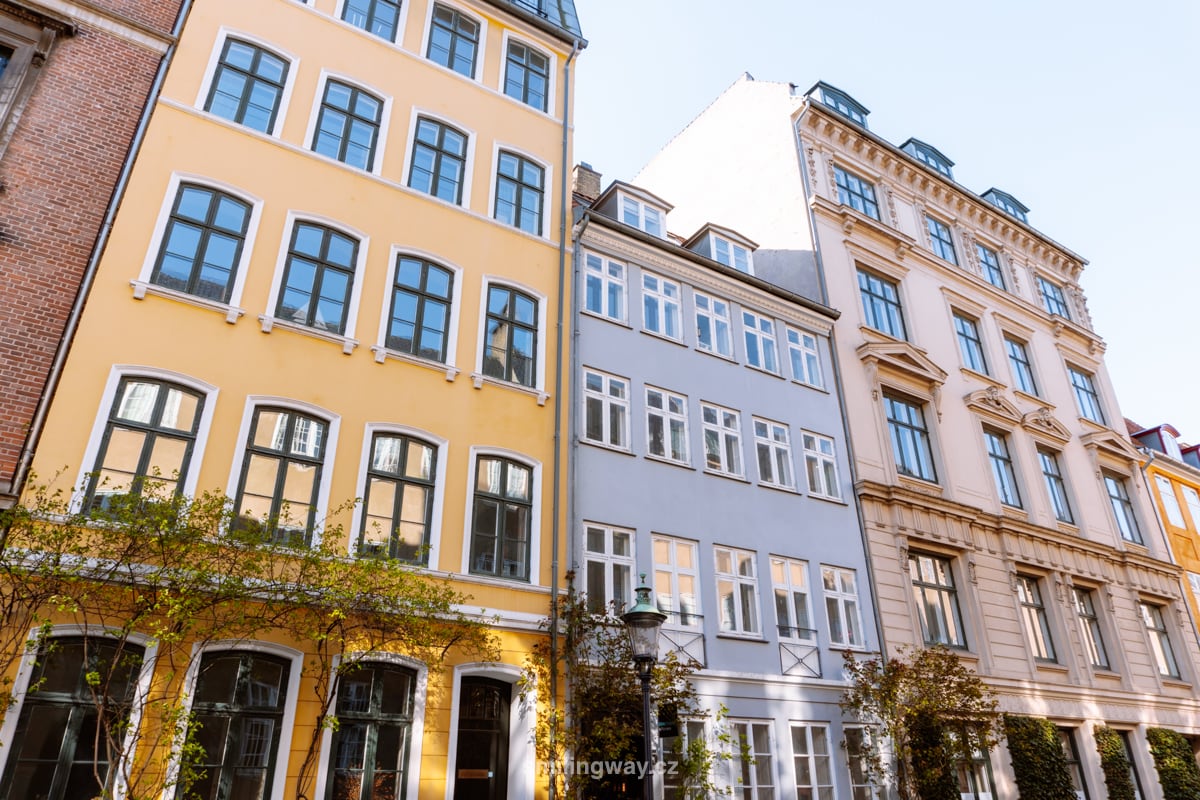
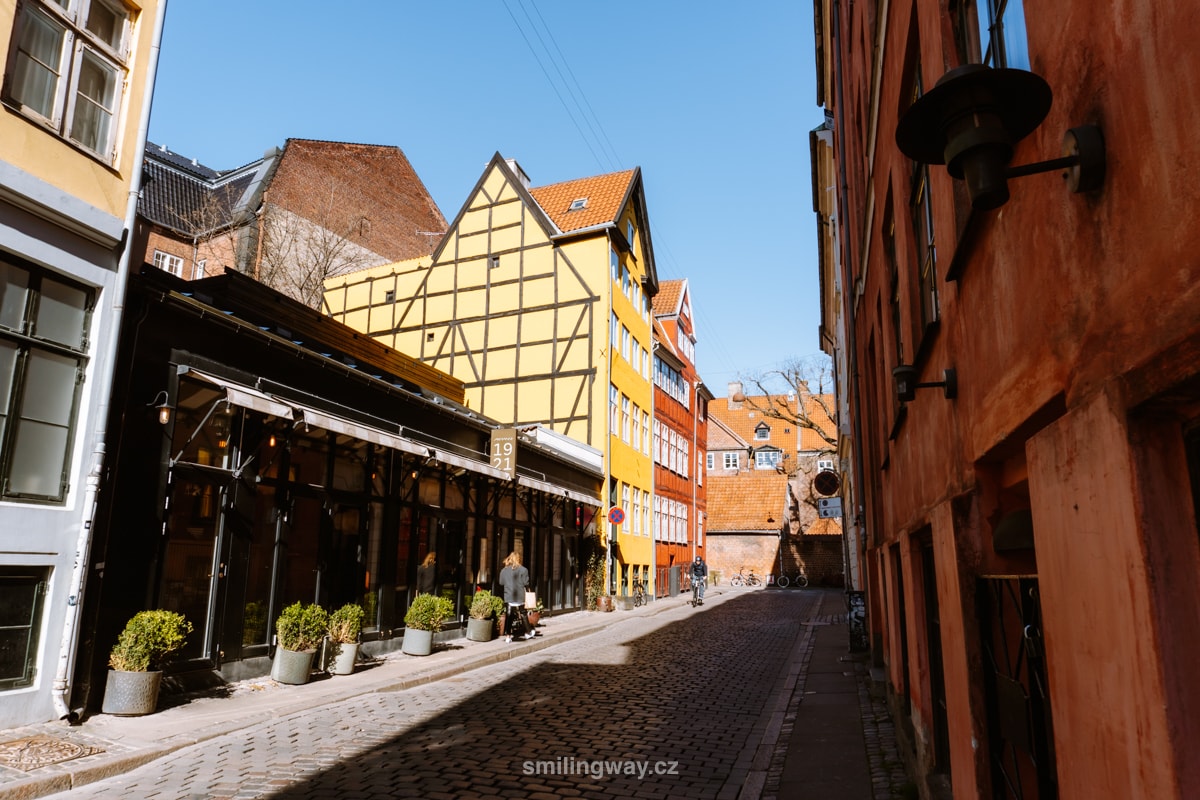
16. Round Tower – things to do in Copenhagen
As you wander through the historic centre, you’re sure to come across the Rundetaarn, a round tower that offers one of the best views of Copenhagen.
Rundetaarn is an iconic landmark of Copenhagen and one of the oldest working observatories in Europe (it has stood here since the 17th century). This place definitely needs to be on your list of things to see in Copenhagen.
Even the journey up is an experience – instead of the traditional stairs, a spiral ramp winds its way to the top of the tower, which is lined with historical exhibitions about the history of the tower.

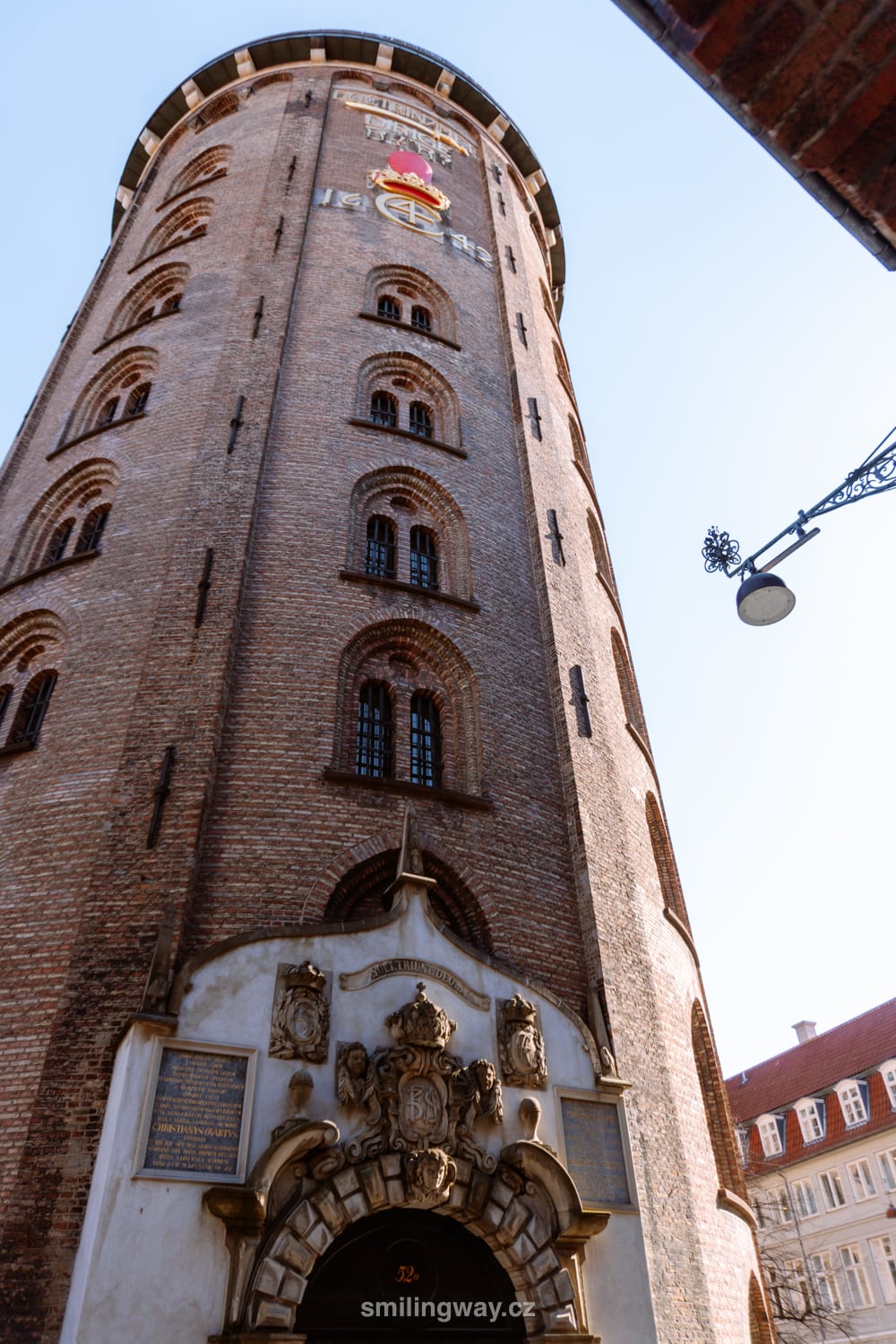
Rundetaarn is still used as an observatory and regularly hosts evening stargazing for the public.
- Admission: Admission is 40 DDK and 10 DDK for children 5-15 years.
- Opening hours: The Round Tower is open daily from April to the end of September from 10:00-20:00 and from October to March from 10:00-18:00 and on Tuesdays and Wednesdays until 21:00, so you can enjoy the view of beautifully lit Copenhagen.
- Part of the Copenhagen Card: no, now from 1st 4. 2024 is not part of the Copenhagen Card
17. Walk along the waterfront
Walking along the waterfront is one of the best things to do in Copenhagen, Denmark. The seafront is beautifully landscaped, with seating, stalls and attractions to keep you exploring.
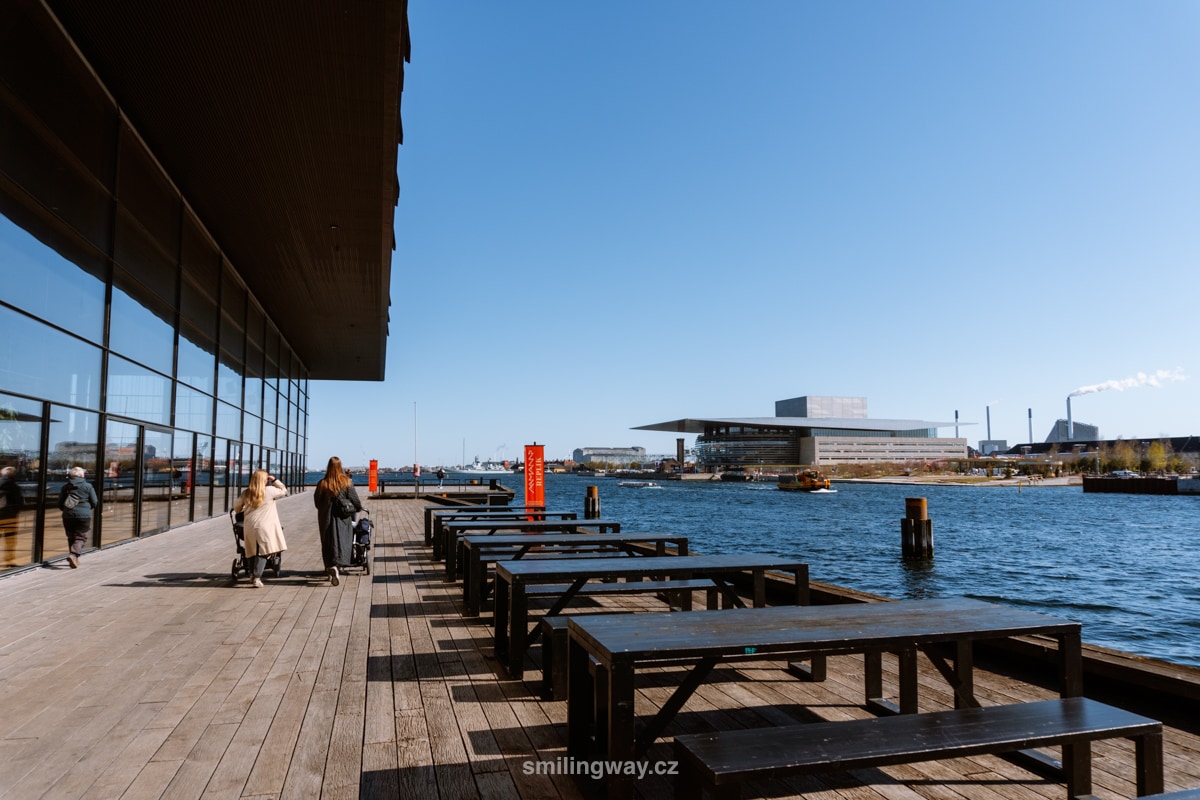
It winds all along the shore and leads to the Little Mermaid in the north, overlooking the futuristic Opera House on the other shore. At times you feel like you are in Hamburg thanks to the red brick houses.
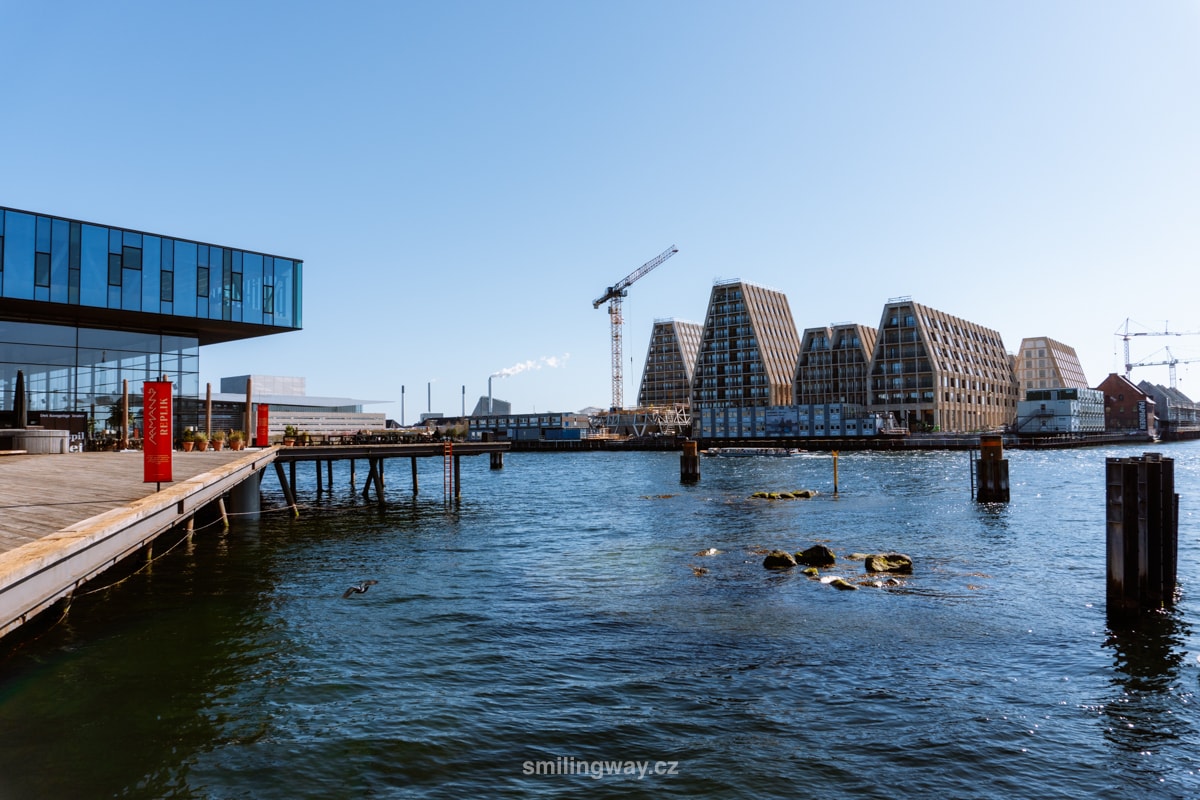
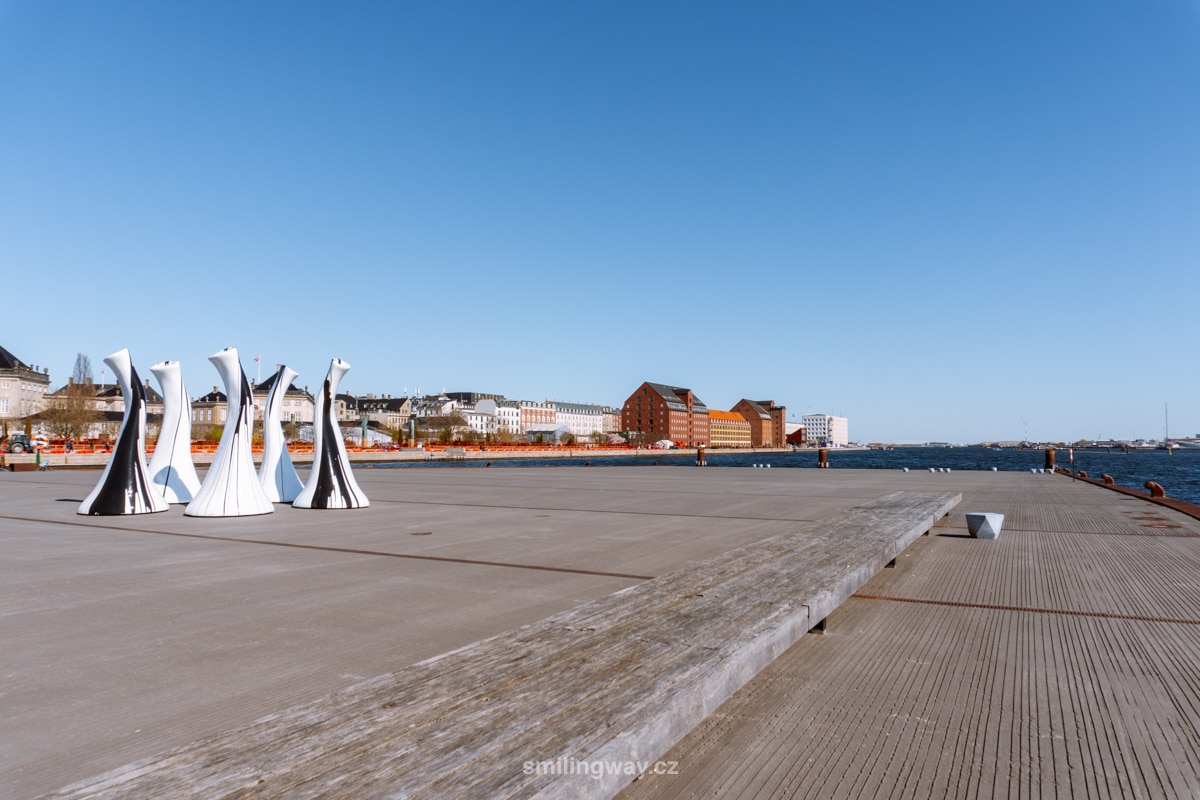
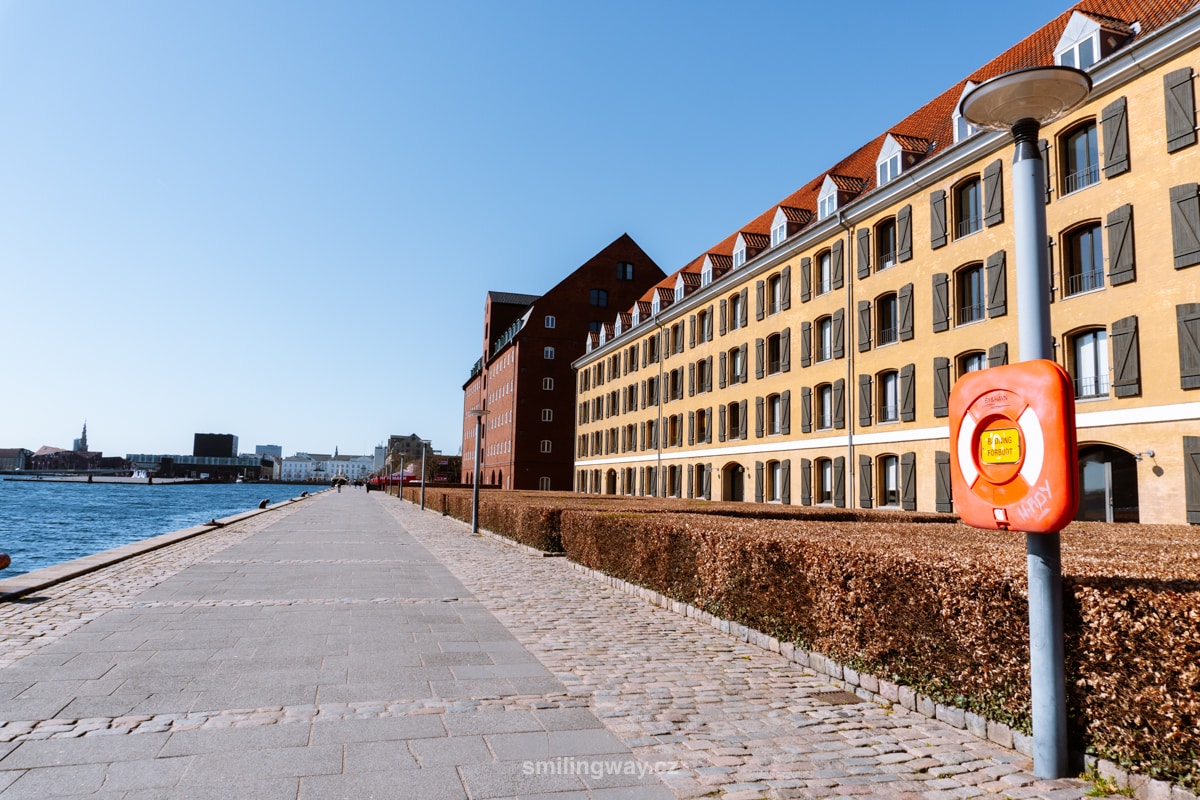
Or head south along the shore to see modern buildings such as the Royal Danish Library and the Architecture Centre.
You can rent a bicycle and ride along the shore. From Nyhavn harbour you will be at the Little Mermaid by bike in a few minutes, on foot in about half an hour.
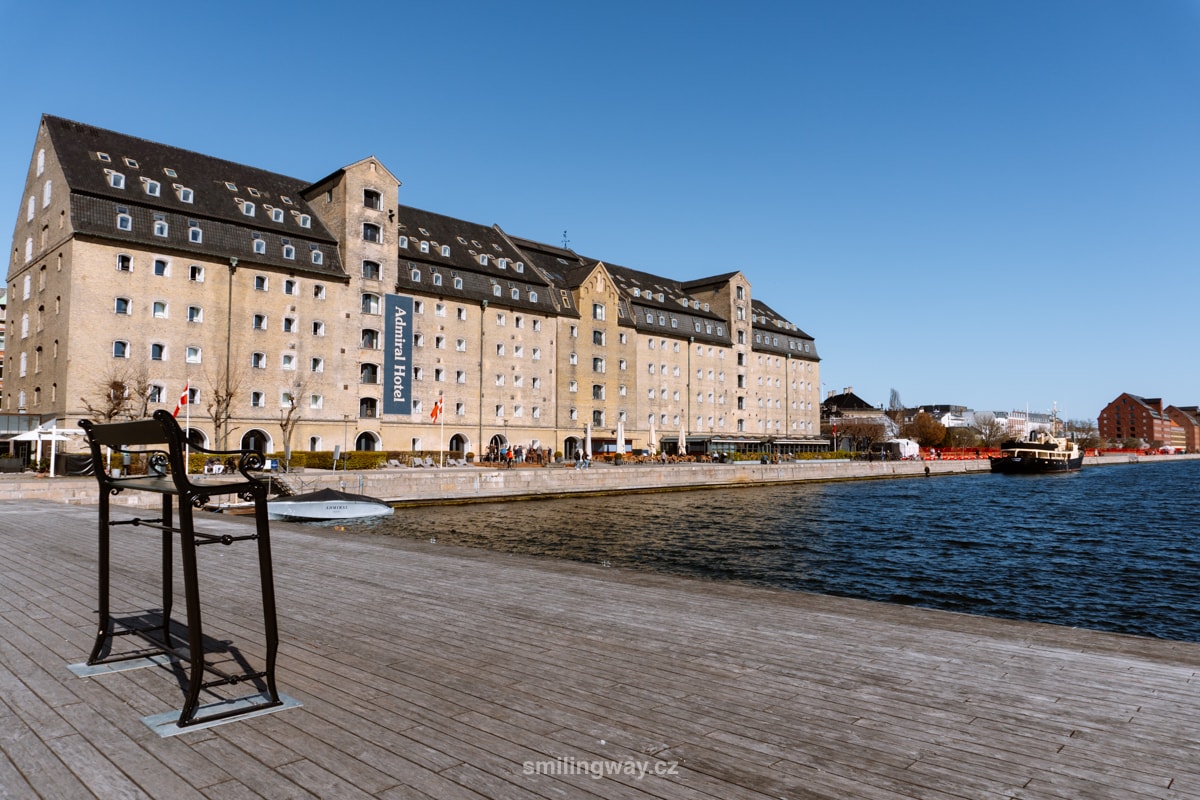
18. The Little Mermaid – things to do in Copenhagen
The Little Mermaid, known in Danish as “Den lille Havfrue”, is one of the most famous and iconic sights in Copenhagen.
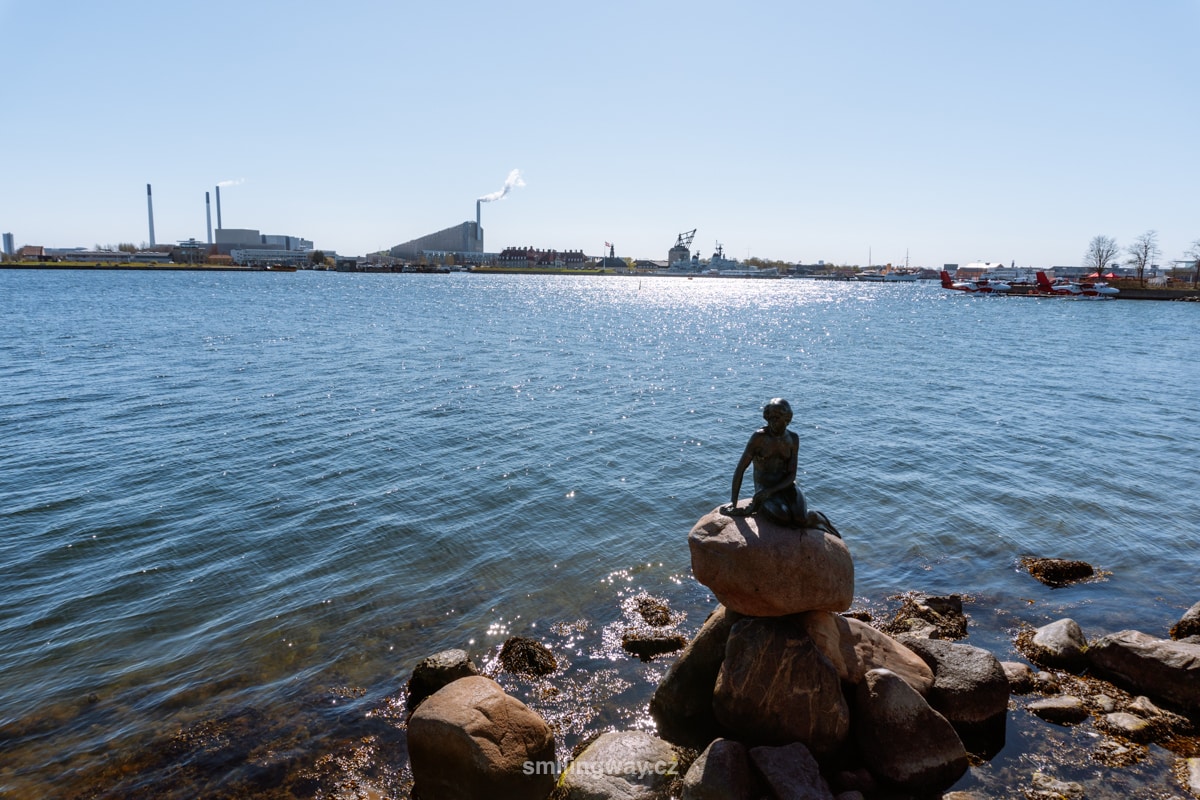
The bronze statue of the Little Mermaid was created by sculptor Edvard Eriksen and unveiled in 1913. It was inspired by Hans Christian Andersen’s fairy tale about a young mermaid who fell in love with a human prince and sacrificed her life under the sea for a human soul.
You may be surprised to learn that the statue is only 1.25 metres tall. It may be disappointing for some, but its significance is rather symbolic and in my opinion worth a pleasant walk from the centre. There are parks and a landscaped waterfront where you can sit in a café or have a picnic in the park.
Admission: open all year round free of charge
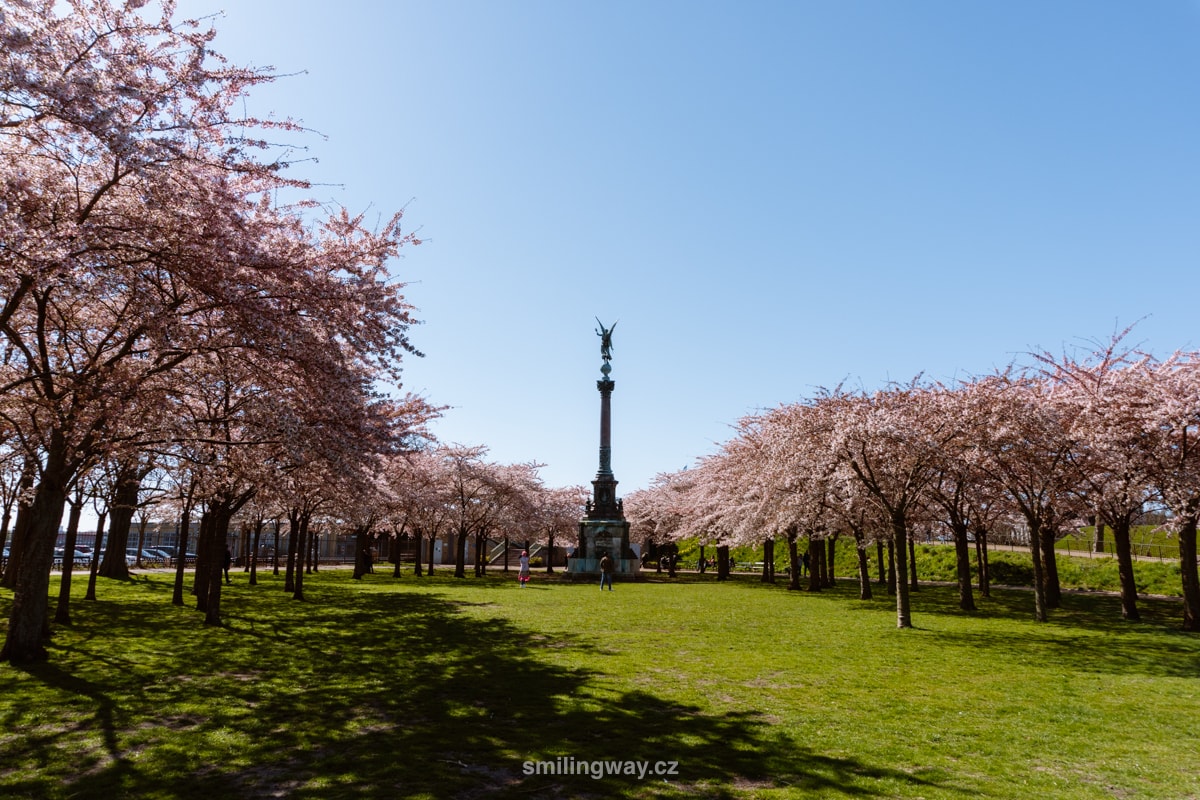
19. Kastellet – things to do in Copenhagen
Kastellet is a fortress located by the statue of the Little Mermaid. A place you might not expect to find in Copenhagen. Another piece of the mosaic that makes for an interesting mix of what to expect in Copenhagen.
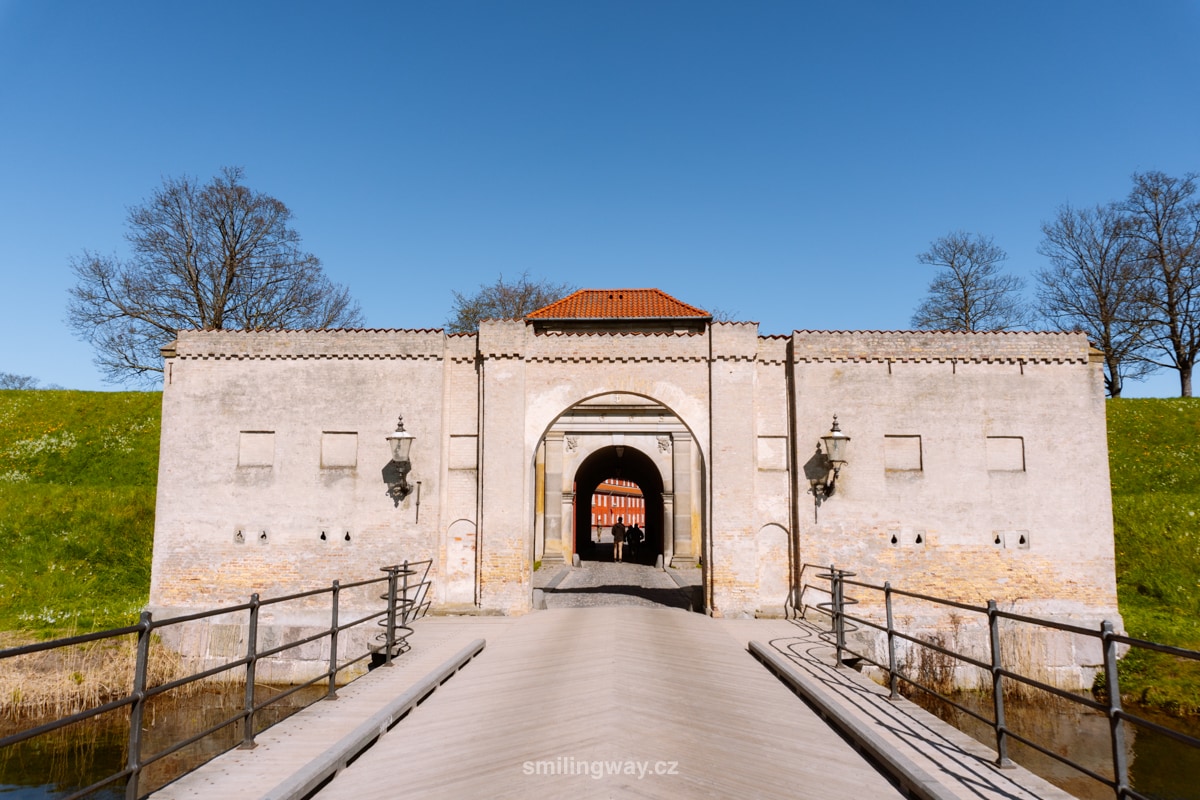
Kastellet is one of the best preserved star fortresses in Europe (like Suomenlinna in Helsinki). It is surrounded by massive walls that you can walk along.
Today it serves as a military barracks, which is open to the public free of charge. It is not overcrowded, on the contrary, you will feel a pleasant peace and security.
- Admission: free
- Opening hours: Kastellet is open 6:00-22:00 in summer and 6:00-20:00 in winter.
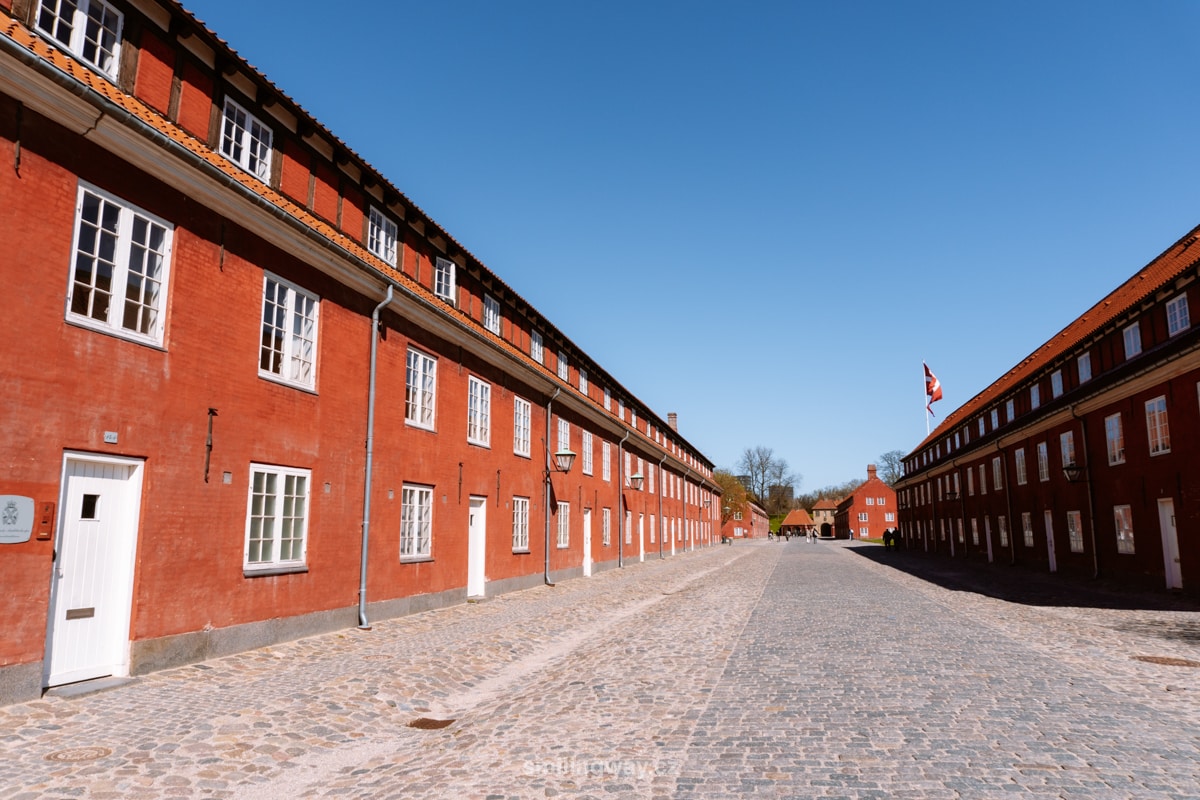
20. Boat cruise in Copenhagen
Boating on the canals and harbour is one of the best ways to explore Copenhagen. You’ll get a completely different perspective on Copenhagen’s architecture, historical monuments and vibrant city life.
Most cruises start in Nyhavn harbour, from where the ship sails past some of the city’s most famous sights, including Christiansborg Castle, the Opera House and the Little Mermaid statue.
Many boat cruises include a passage through the city’s historic canals, surrounded by old merchant houses and elegant palaces. It’s a great opportunity to understand why Copenhagen is often referred to as the “Venice of the North”.
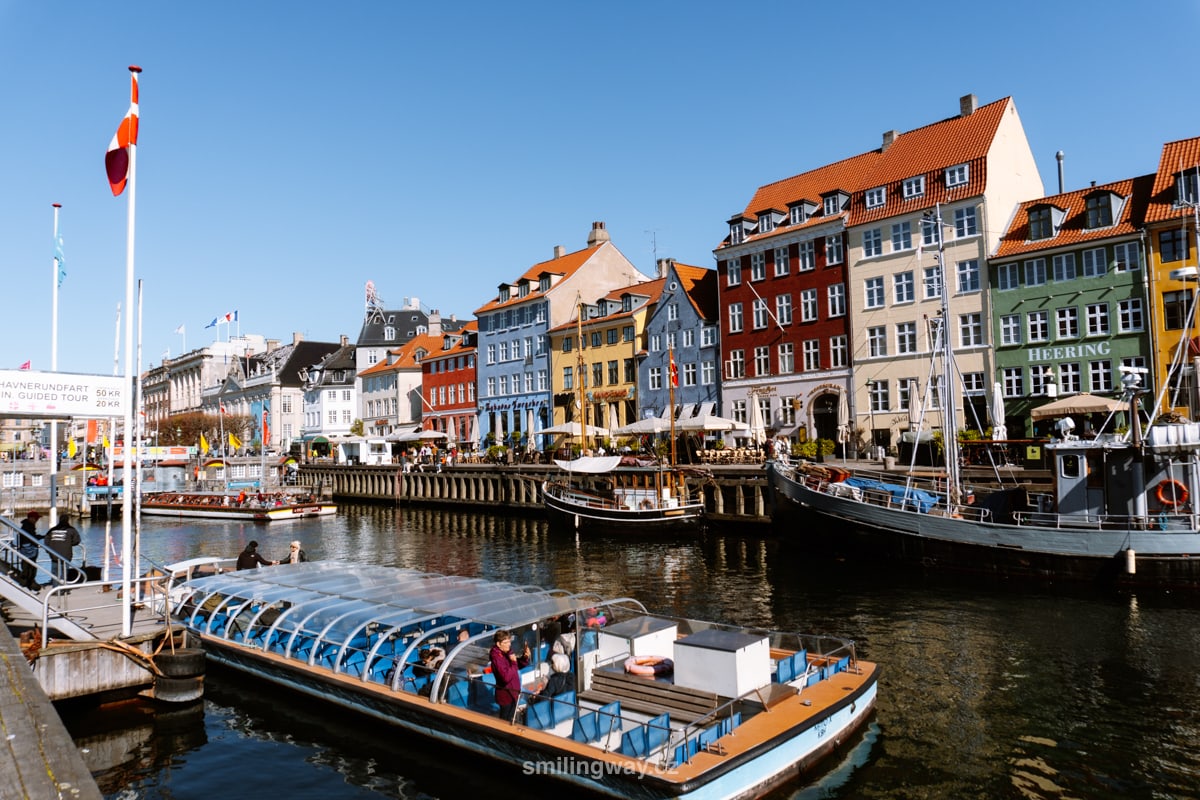
The guide will tell you all sorts of interesting facts and you will also get a great angle for photography. The boats sail all year round and are heated and covered in winter.
Price: boat cruise starts from 135 DDK (half price for a child). Boats usually depart from 9:30 in the morning at regular half-hour intervals until the evening.
If you want to avoid the crowds, choose morning times. For the most beautiful light, don’t miss a cruise at golden hour or around sunset (in summer the sun usually sets here between 8-10pm).
Tickets: You can book your cruise here. You just show your booking confirmation at check-in and skip the queue for tickets.
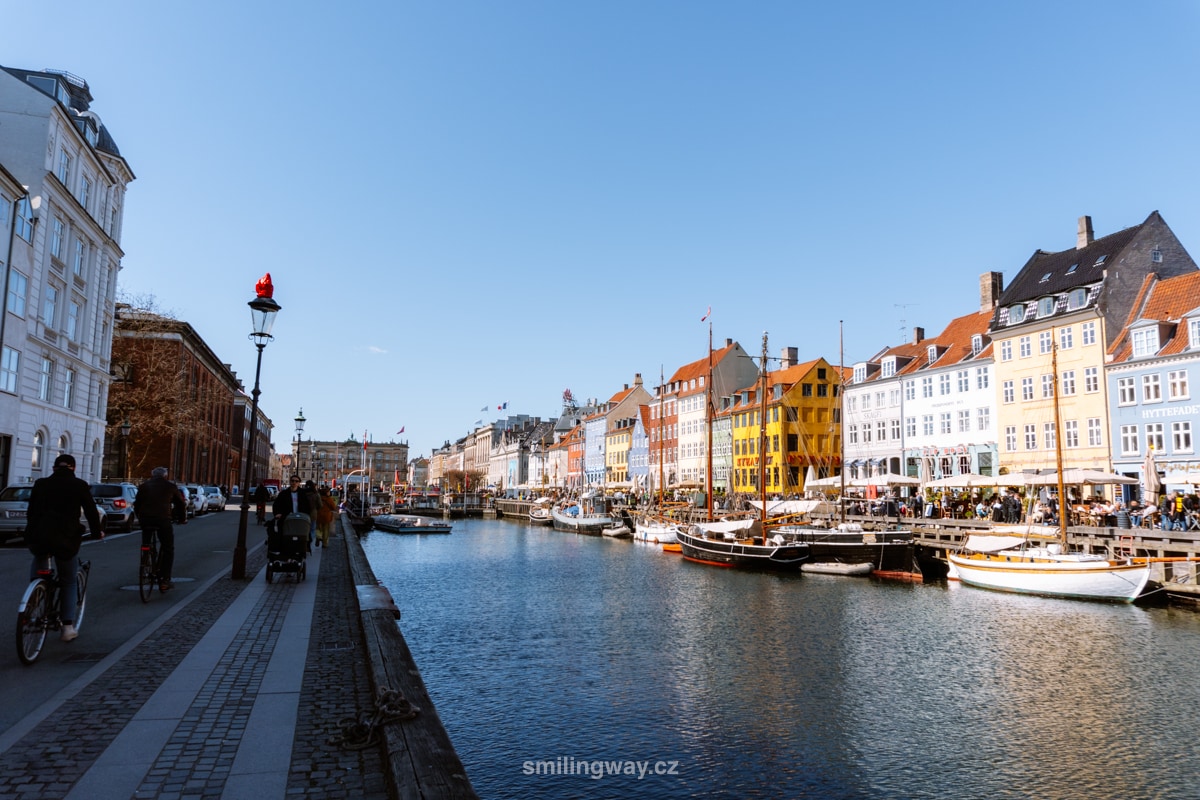
Included with Copenhagen Card: yes, free with Copenhagen Card. If you are planning a cruise with the Copenhagen Card, the embarkation point is in Ved Stranden (opposite Christiansborg, 5 minutes from Nyhavn). The cruise takes an hour. Here you can find more information about sailing with the Copenhagen Card.
☞ Read our detailed itinerary of what to see in Copenhagen in 3 days.
21. National Aquarium of Denmark
The National Aquarium of Denmark, in Danish Den Blå Planet, means Blue Planet. It is one of the largest and most modern aquariums in Northern Europe and is located just a short walk from Copenhagen Airport.
It is housed in a futuristic building that was inspired by the shaping of water currents. Inside, the aquarium is divided into several sections, from Denmark Lake to the Alaskan kelp sea to the Ocean.
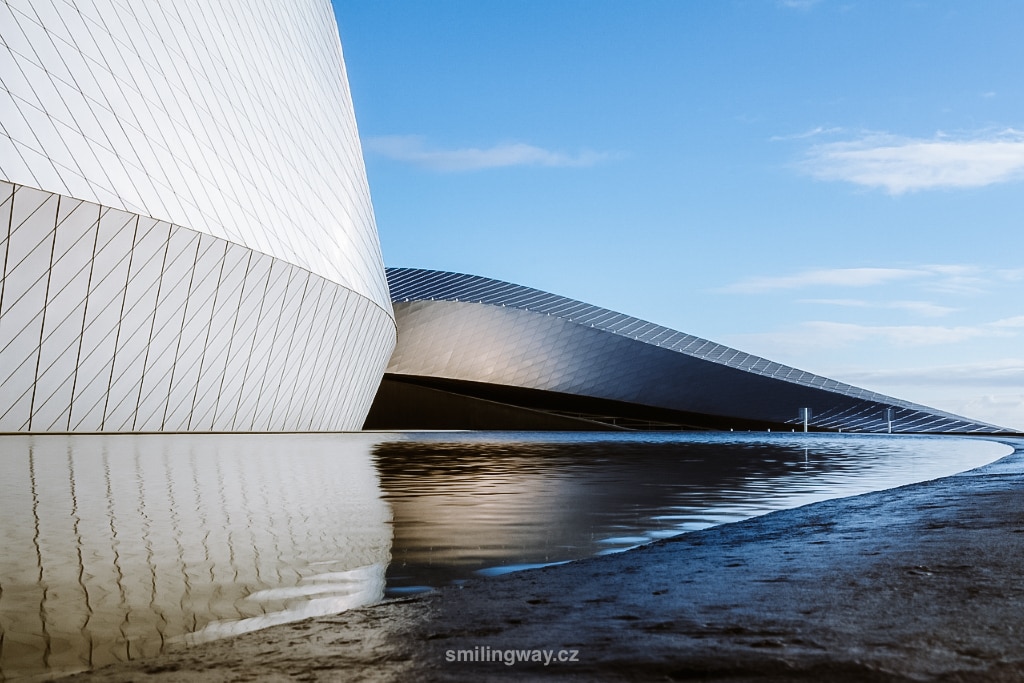
- Admission to the National Aquarium of Denmark: full admission is 199 DDK (209 DDK in season) and 107 DDK (112 DDK in season) for children 3-11 years old. Prices are valid when booking online – tickets are more expensive on site.
- Opening hours: daily 10:00-21:00 in high season, Monday 10:00-21:00 and Tuesday-Sunday 10:00-17:00 during the rest of the year
- Part of the Copenhagen Card: no
The aquarium is connected to a small harbour with wooden huts, behind which is the long Amager Strandpark beach, where you can swim, have a snack or enjoy the view of the long bridge that connects Denmark to Sweden.
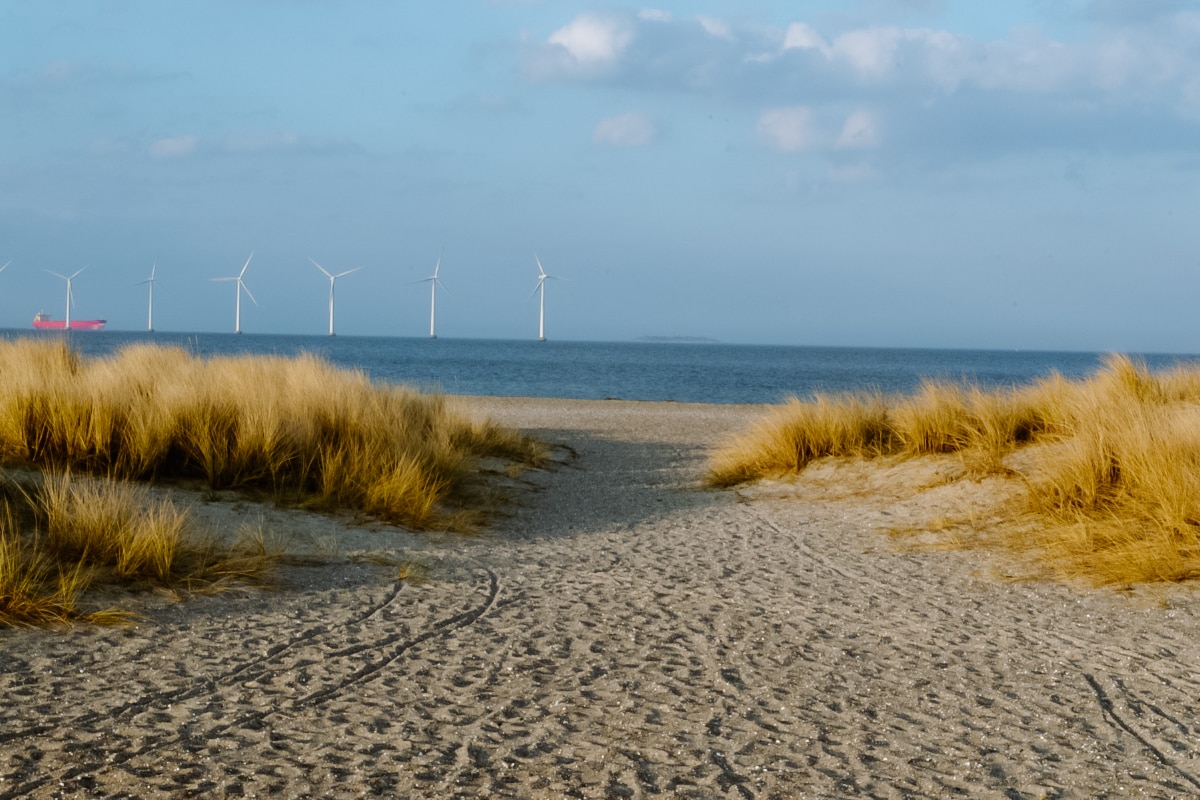
22. Kronborg – things to do around Copenhagen
Kronborg, often called “Hamlet’s Castle”, is one of Denmark’s most important historical sites and is a UNESCO World Heritage Site.
Located on the northernmost tip of the Danish island of Zealand, this castle and fortress plays a key role in Danish history and is one of the most beautiful Renaissance castles in Europe. Kronborg is best known as the setting for Shakespeare’s drama Hamlet.
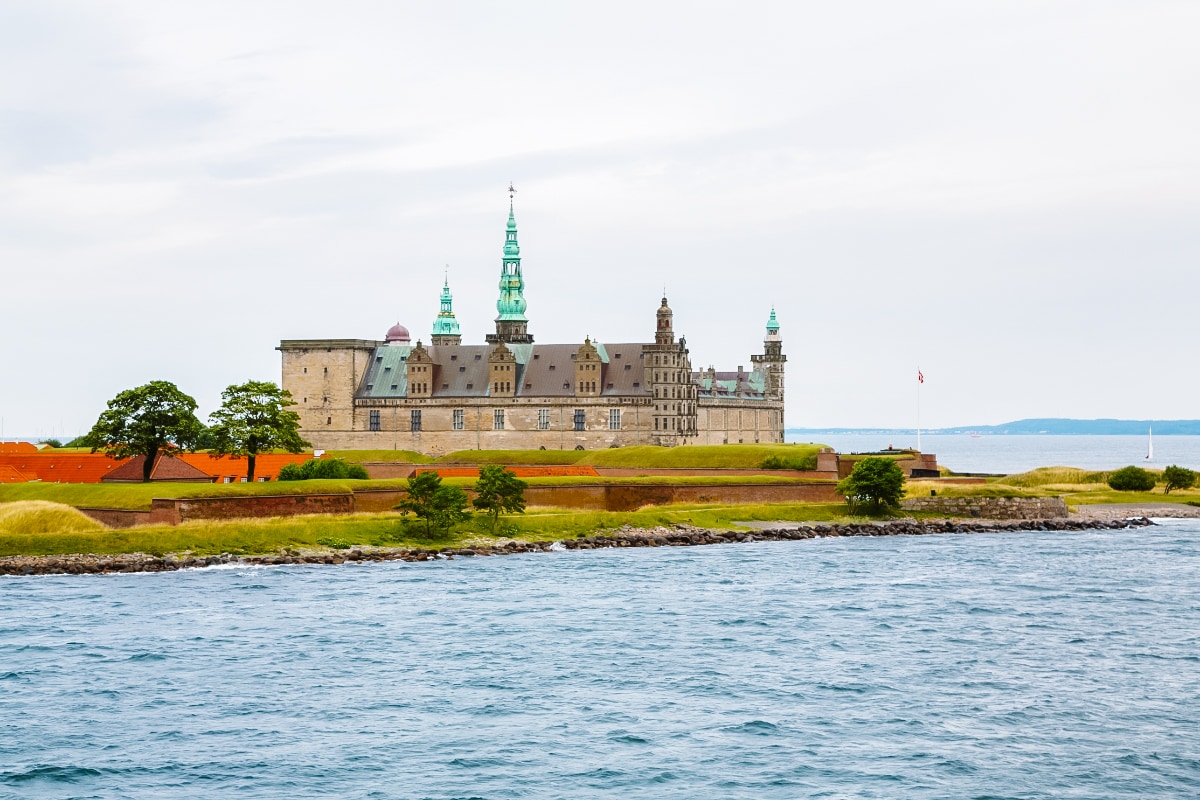
- How to get: Kronborg is 40 minutes north of Copenhagen and is the most popular day trip from the Danish capital. The easiest way to get here is to take a direct train from Copenhagen Central Station, which is near Tivoli Gardens in the centre. If you have a Copenhagen Card, you travel for free.
- Admission to Kronborg Castle: full admission is 125 DDK, 115 DDK for students and under 18 free.
- Opening hours: open daily – in season from May to October from 10:00-17:00 and in low season from 11:00-16:00.
- Part of the Copenhagen Card: yes, free entry with Copenhagen Card
23. Roskilde Cathedral
Roskilde Cathedral, located in the town of Roskilde west of Copenhagen, is one of the most important historical and architectural monuments in all of northern Europe. It was the first Gothic church built of brick, after which the style spread throughout northern and eastern Europe. The cathedral is a UNESCO World Heritage Site.
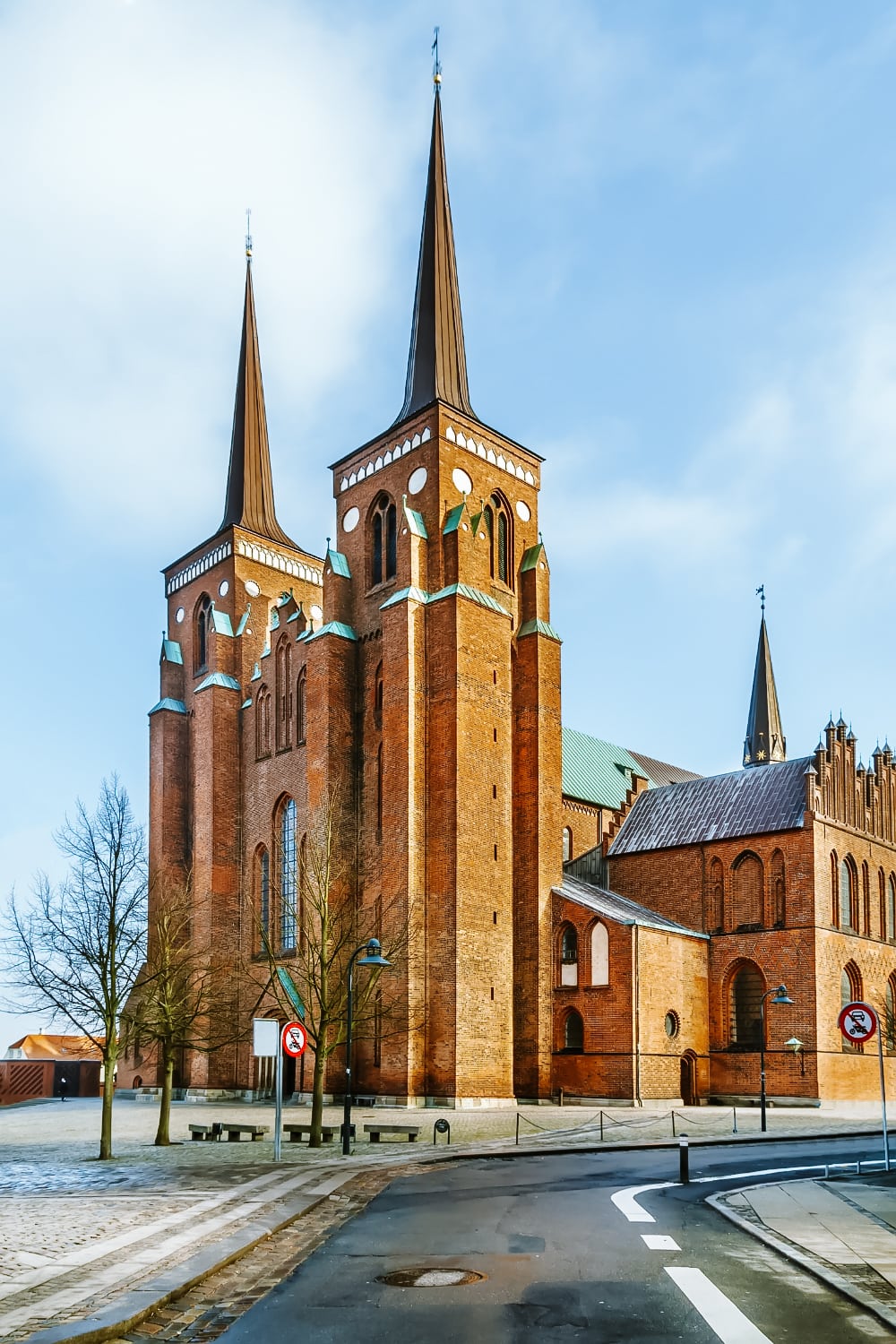
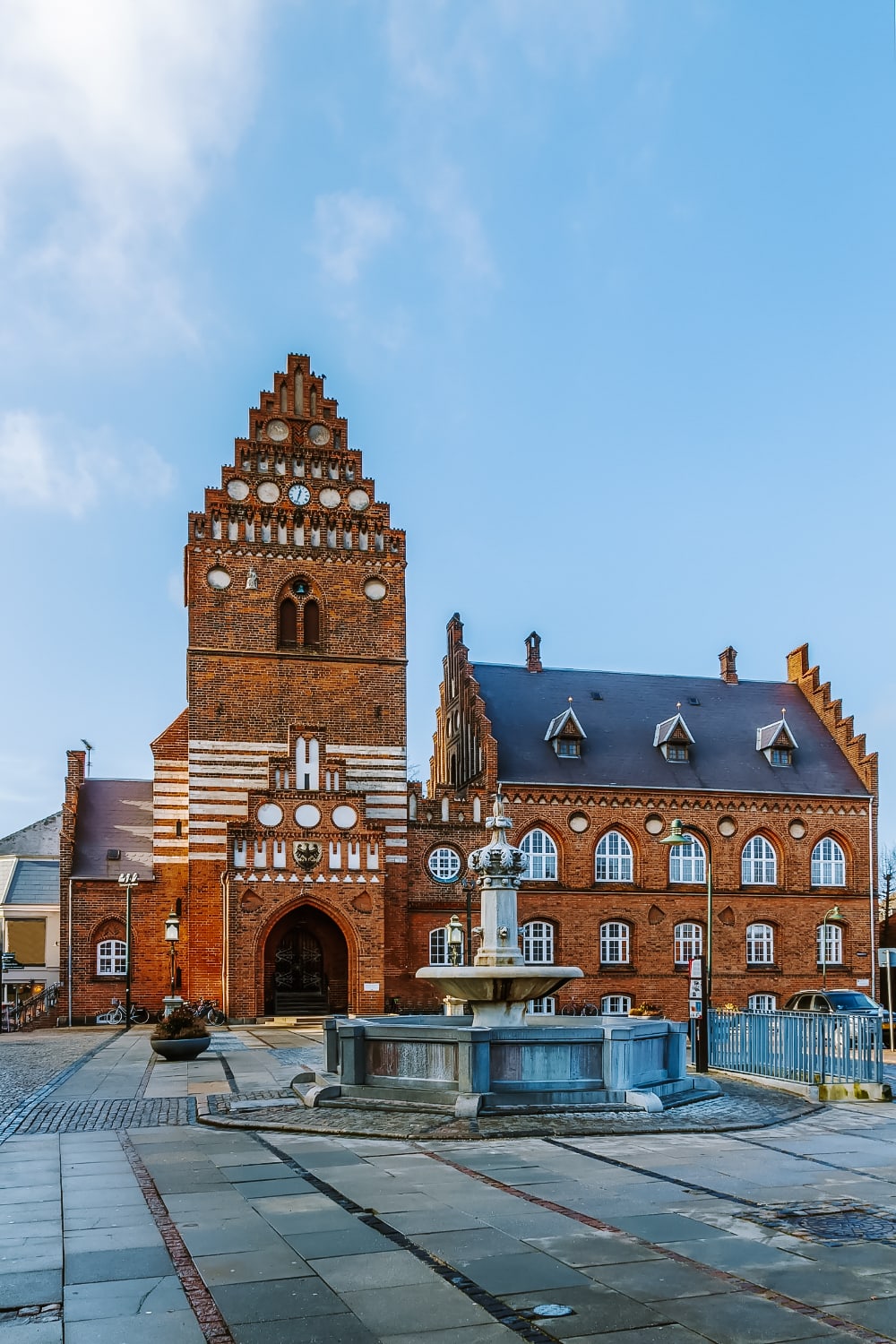
From 15th century to the present day, more than 40 Danish kings and queens are buried in the cathedral. Moreover, the interior of the cathedral is as impressive as its historical significance, with richly decorated chapels and magnificent stained glass windows.
- How to get in: Roskilde is just 20 minutes by direct train from Copenhagen, departing from the main station in the centre. If you have a Copenhagen Card, your trip is free.
- Entrance to Roskilde Cathedral: Full admission is 70 DDK, 50 DDK for students and seniors over 67 and under 18 free.
- Opening hours: check the opening hours here.
- Part of the Copenhagen Card: yes, free entry with Copenhagen Card
Where to stay in Copenhagen
- Comwell Copenhagen Portside Dolce by Wyndham: Fantastic, new hotel with full facilities, excellent breakfast and just steps from the metro and boat bus
- Next House Copenhagen: Great value accommodation in a quiet area on the edge of the centre, lounge with games room, shared kitchen, washing machine, choice of single rooms with bathroom or shared rooms
- CPH Hotel: Cosy Scandinavian-style hotel with swimming pool and spa
- Cabinn Copenhagen: Cheap accommodation including private bathroom, breakfast and good access to the centre
Hotels in Copenhagen 😴
What to taste in Copenhagen
Your taste buds will be spoilt for choice in Copenhagen. You can taste traditional Danish food, but also modern and innovative dishes from around the world. Here are some tips on what to try in Copenhagen:
- Grød: Flaky porridge with nuts and fruit for breakfast
- Smørrebrød: A classic Danish sandwich in a healthier version, consisting of a piece of dark bread, usually rye, covered with various fillings such as smoked salmon, beef, pork, cheese, eggs or various vegetables. It is often decorated with herbs or even flowers.
- Frikadeller: Danish meatballs made from pork or beef, served with potato salad, red cabbage or cranberry jam.
- Hot Dog in Denmark: Copenhagen is famous for its hot dog stands, which offer hot dogs in many variations. A Danish hot dog usually contains a hot dog, garnished with mustard, ketchup, mayonnaise, onions, pickles and sometimes remoulade.
- Denmark is famous for its excellent seafood, including oysters, prawns, crayfish and more. Many restaurants in Copenhagen offer special seafood that is fresh and locally sourced.
- Danish pastries and sweets such as kanelsnegle (cinnamon snail) and tebirkes (poppy seed strudel).

Things to do in Copenhagen – map
HOW TO USE THIS MAP: Above you will find a detailed map of things to do in Copenhagen, Denmark. Click at the top left of the map to see separate layers with highlighted locations. You can hide and show the different layers or click on the icons on the map to see the names of the places I mention in the Copenhagen guide. If you want to save the map, star it. For a larger version, click on the icon in the upper right corner.
Useful information before travelling to Copenhagen, Denmark
Language: The official language is Danish, but English is also very easy to understand.
Currency: The currency in Copenhagen is the Danish krone (DKK).
Socket: Denmark uses socket types C and K, voltage 230 V and frequency 50 Hz. Type C is a common “euro” connector with two round pins. Type K has two round pins like type C, but also has a third pin for grounding.
Safety: Like many European cities, Copenhagen is a safe place to live and visit. The city districts are well lit, public transport is safe and most people speak English, so you can understand if you need to.
However, as in any big city, it is better to be careful and mind your personal belongings. Pickpockets can be active in tourist areas and places with large numbers of people, such as train stations or large public events.
Basic phrases:
- Hej – Hi
- Goddag – Hello
- Hej hej – Informal Goodbye
- Tak – Thank you
- Ja – Yes
- Nej – No
- Undskyld – Excuse me
- Hvor er toilettet? – Where’s the toilet?
- Jeg forstår ikke – I don’t understand
- Kan du tale engelsk? – Do you speak English?
- Hjælp – Help
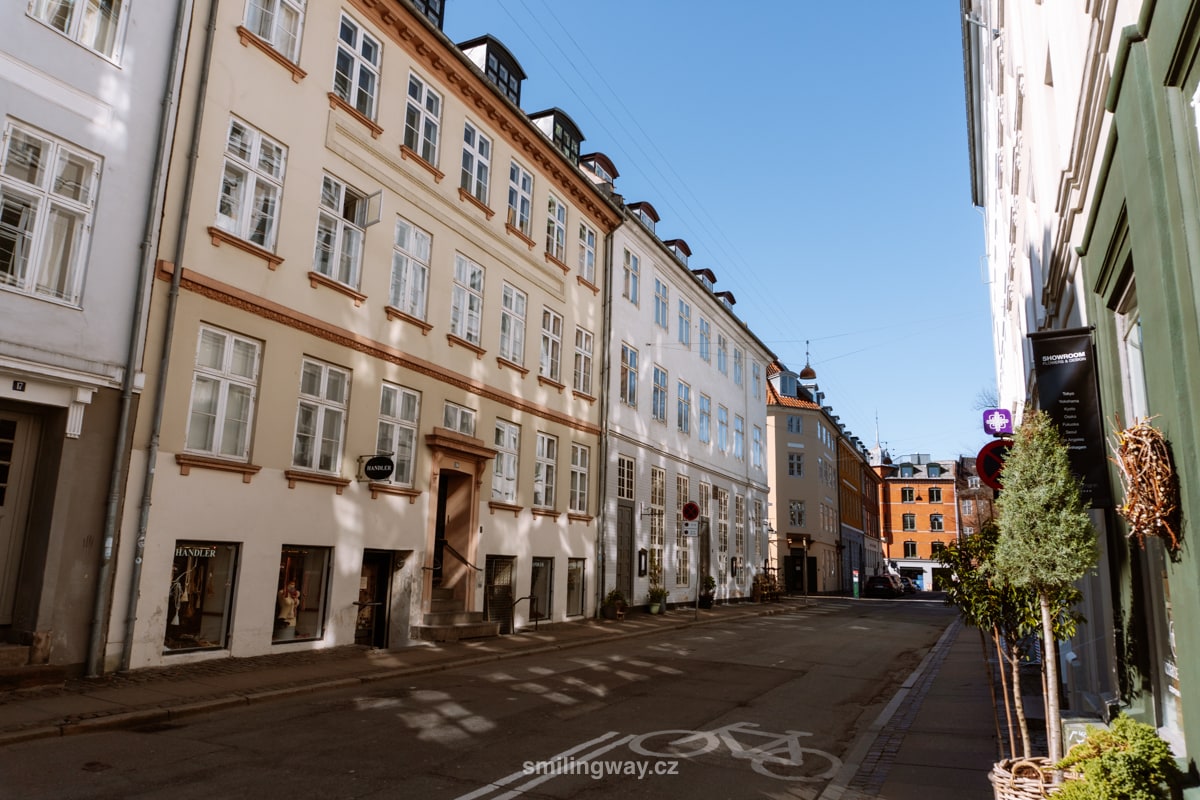
How to enjoy Copenhagen
- You can pick up free paper maps and small guidebooks of Copenhagen at the metro stations.
- Rent a bike and ride around the waterfront. Copenhagen is very bike-friendly.
- Copenhagen has beautiful parks and a long, landscaped waterfront that invites strolling. Comfortable shoes are a must.
- If you get cold easily, wear a scarf around your neck to protect yourself from the cold wind.
- Get your Copenhagen Card and get free entry to most places in Copenhagen and unlimited transport throughout the region (including from the airport) for one price.
- Clean toilets are free in Copenhagen. In the centre, it’s by Nyhavn harbour, Strøget or the square with the town hall. Just type “public toilet” into Google maps and the nearest ones will pop up (just beware that some are for ladies only and some are for gentlemen).
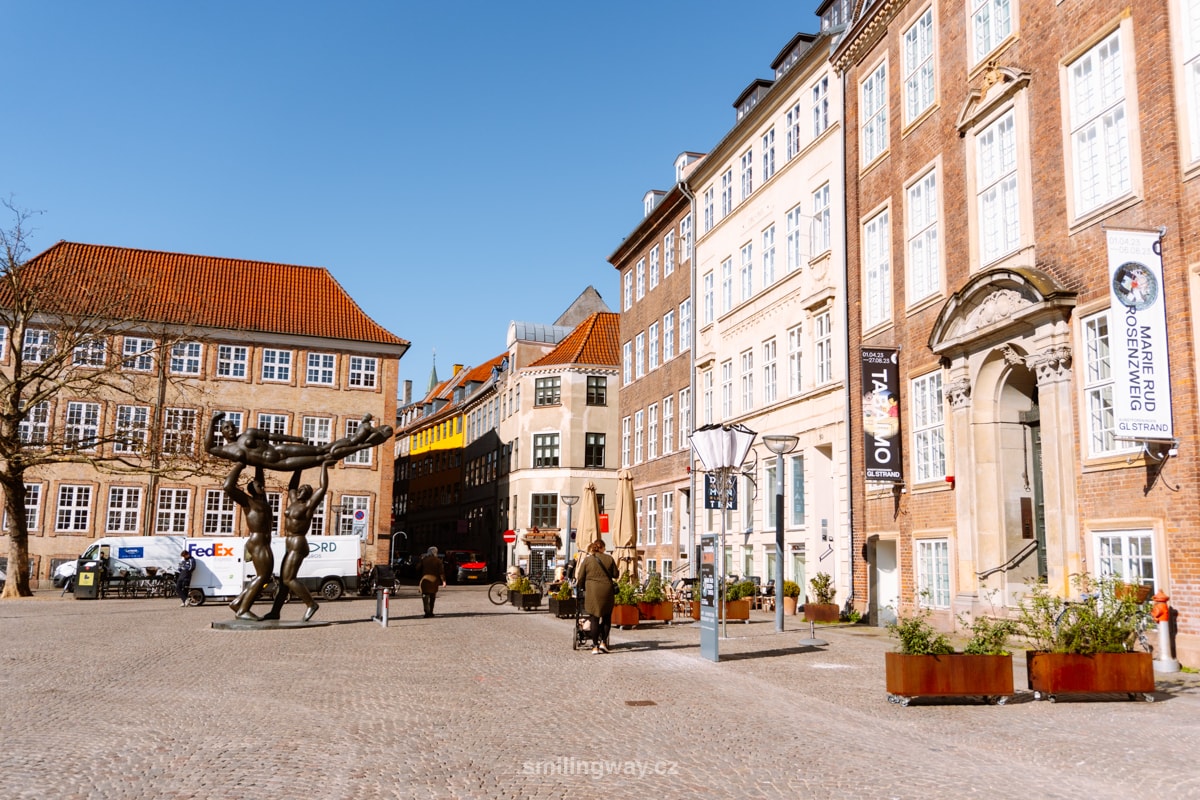
This was our travel guide to things to do in Copenhagen. Do you have a question? We’ll be happy to answer it in the comments below. Have a safe journey!
More information about Scandinavia
COPENHAGEN: Read our detailed itinerary of what to see in Copenhagen in 3 days. For more information on public transport, read our detailed guide to transport in Copenhagen. We’ve written a detailed review of how to save in Copenhagen with the Copenhagen Card.
STOCKHOLM: Stockholm is another beautiful, royal city in Scandinavia. Get inspired with tips on best things to do in Stockholm.
HELSINKI: Here are tips on the things to do in Helsinki.
Get even more inspiration and choose a destination for your next trip here.
